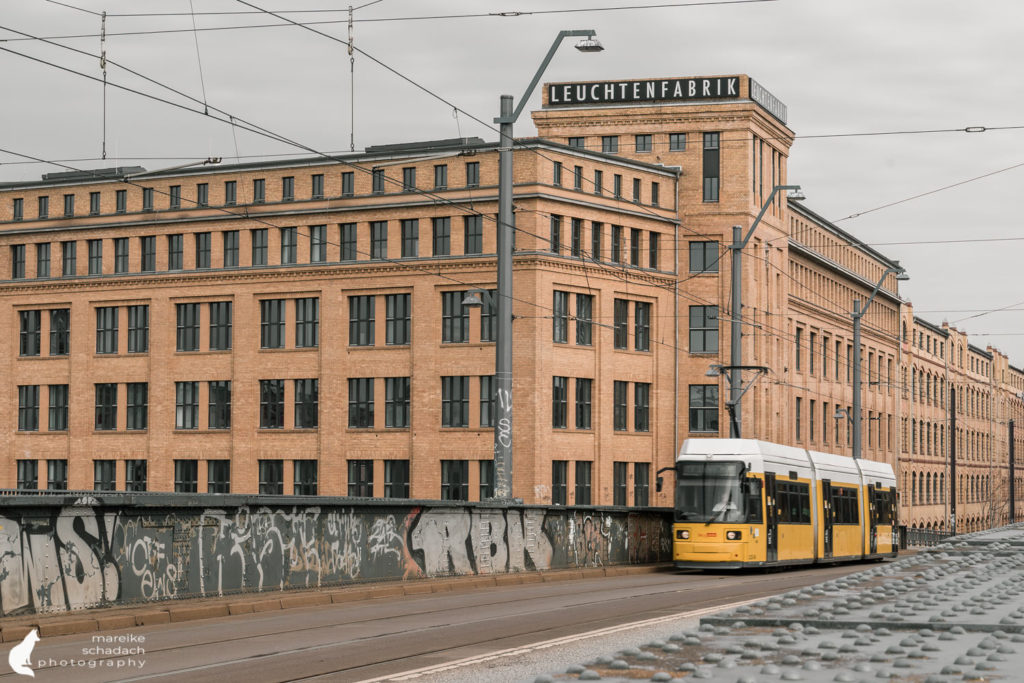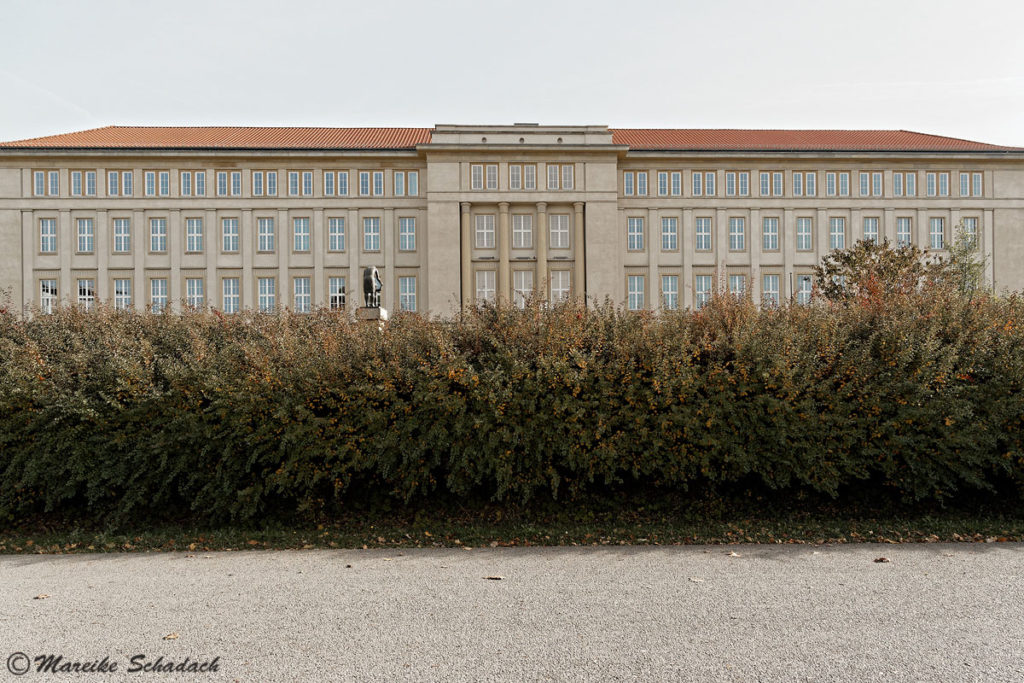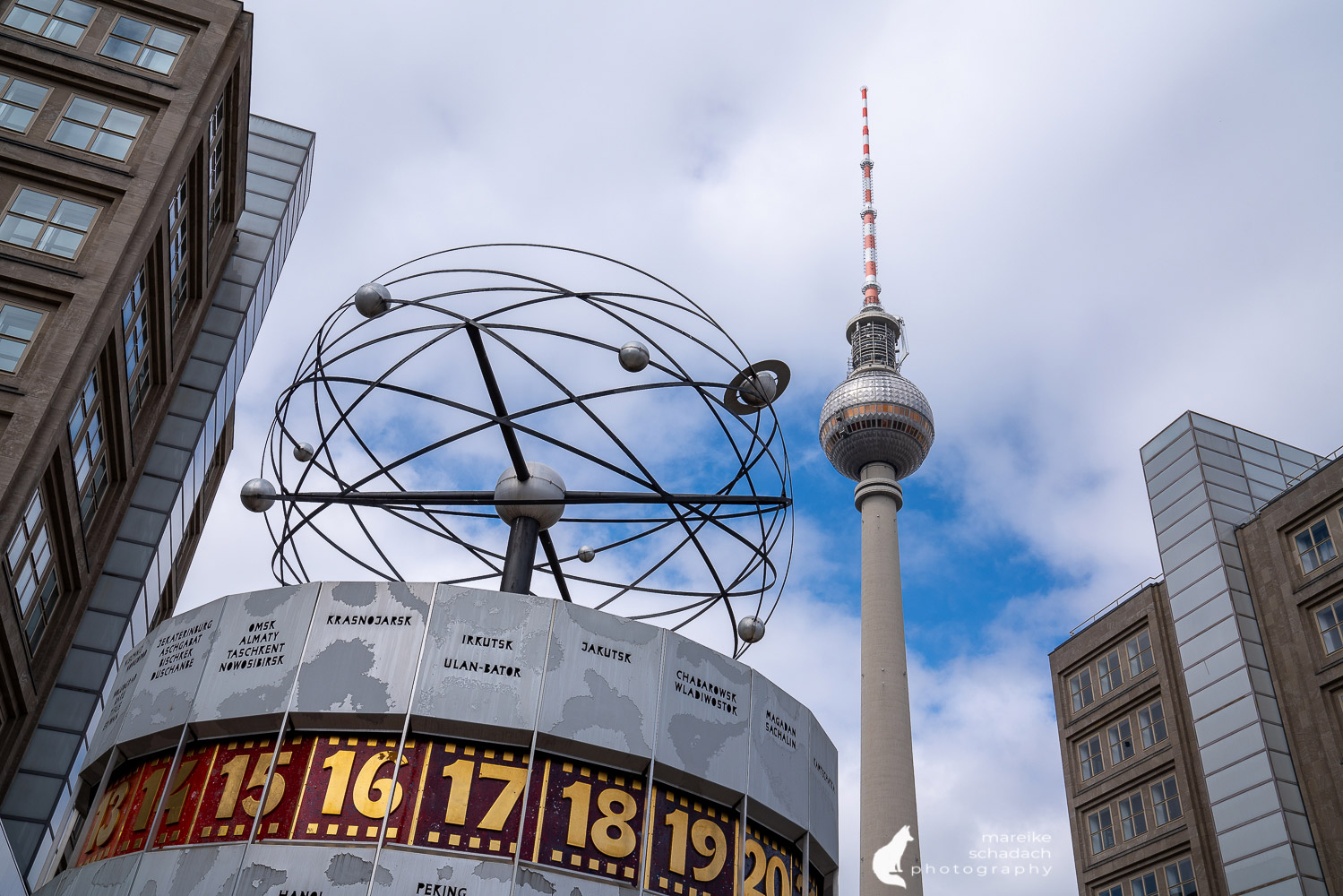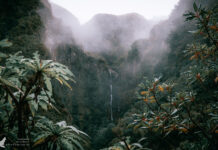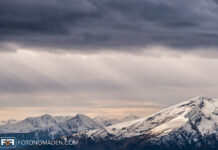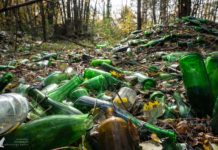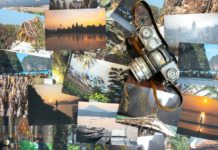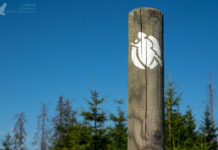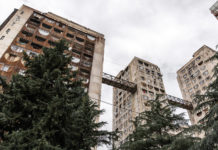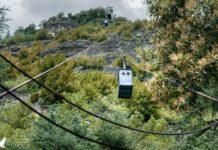Berlin. Monumental propaganda buildings, boulevards and prefabricated buildings. A walk from Alexanderplatz along Karl-Marx-Allee to Frankfurter Tor is a discovery tour in the footsteps of the GDR. In addition to the magnificent showpieces of socialism, you will find old advertising signs, fountains, mosaics or small hidden details on the facades of the houses. In the following article I take you on a tour through Berlin and show you a few impressive examples of GDR architecture.
Unassigned, unpaid advertising. The article contains affiliate links.

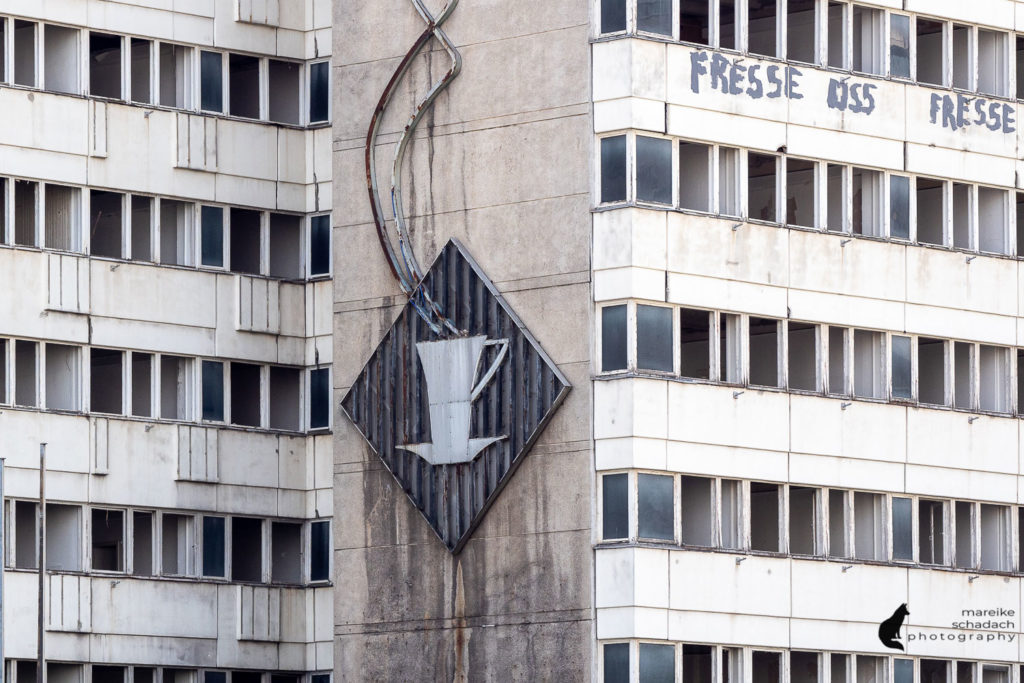
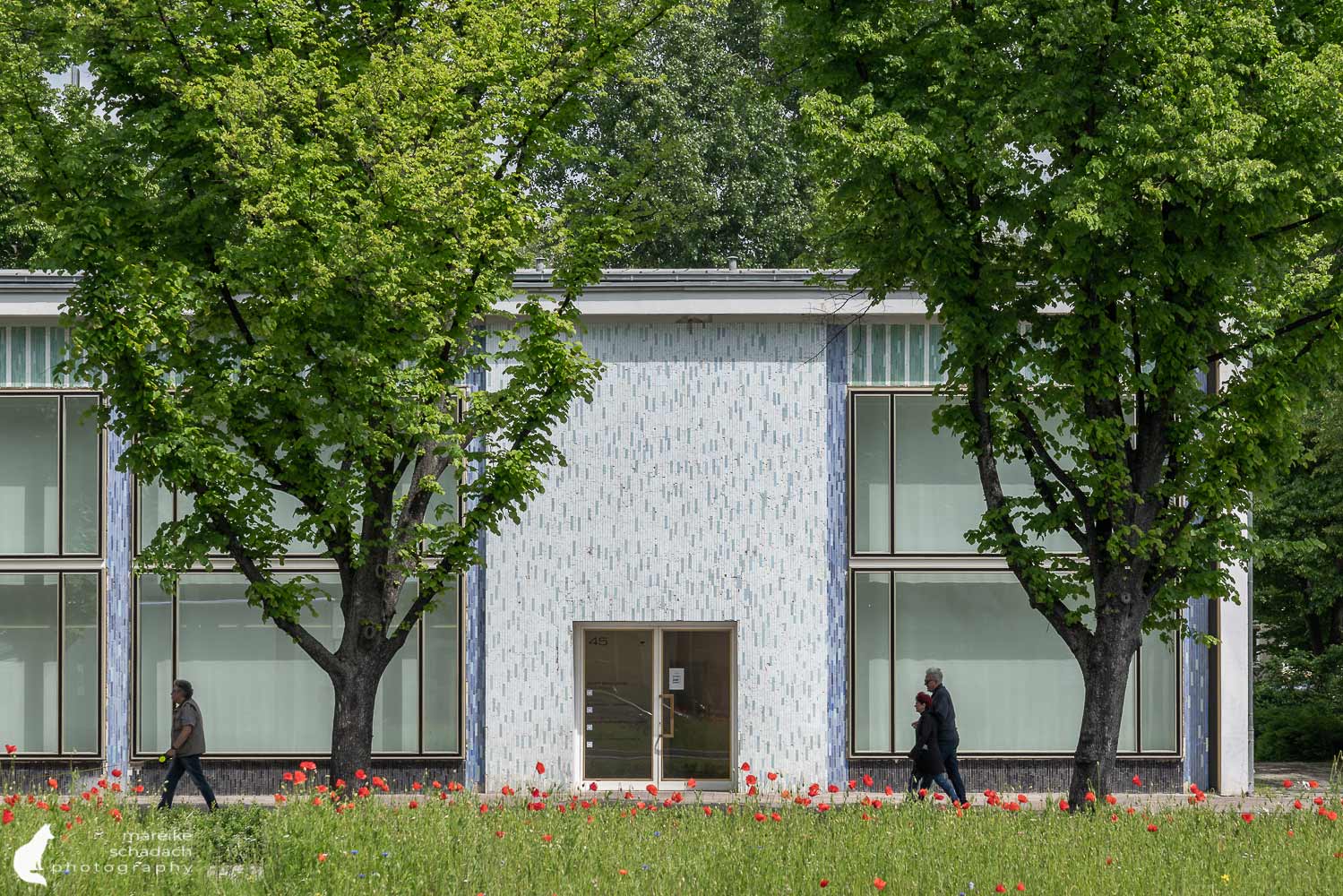
TV Tower at Alexanderplatz
I don't think there are as many different souvenirs of any building in Berlin as there are of the TV Tower at the Alex: magnets, pencil sharpeners, cuddly TV towers, liquor bottles, cookie cutters and much more. Nothing that does not exist. It's hard to imagine the city without Berlin's tallest landmark, the 368 meter tower. You can see it from so many corners towering through the rows of houses, pointing the way. And when planes could still land at the inner-city Tegel Airport, it welcomed incoming passengers from afar.
Photo tip: From the roof terrace of the Park Inn Hotel opposite you have a great view of the tower.
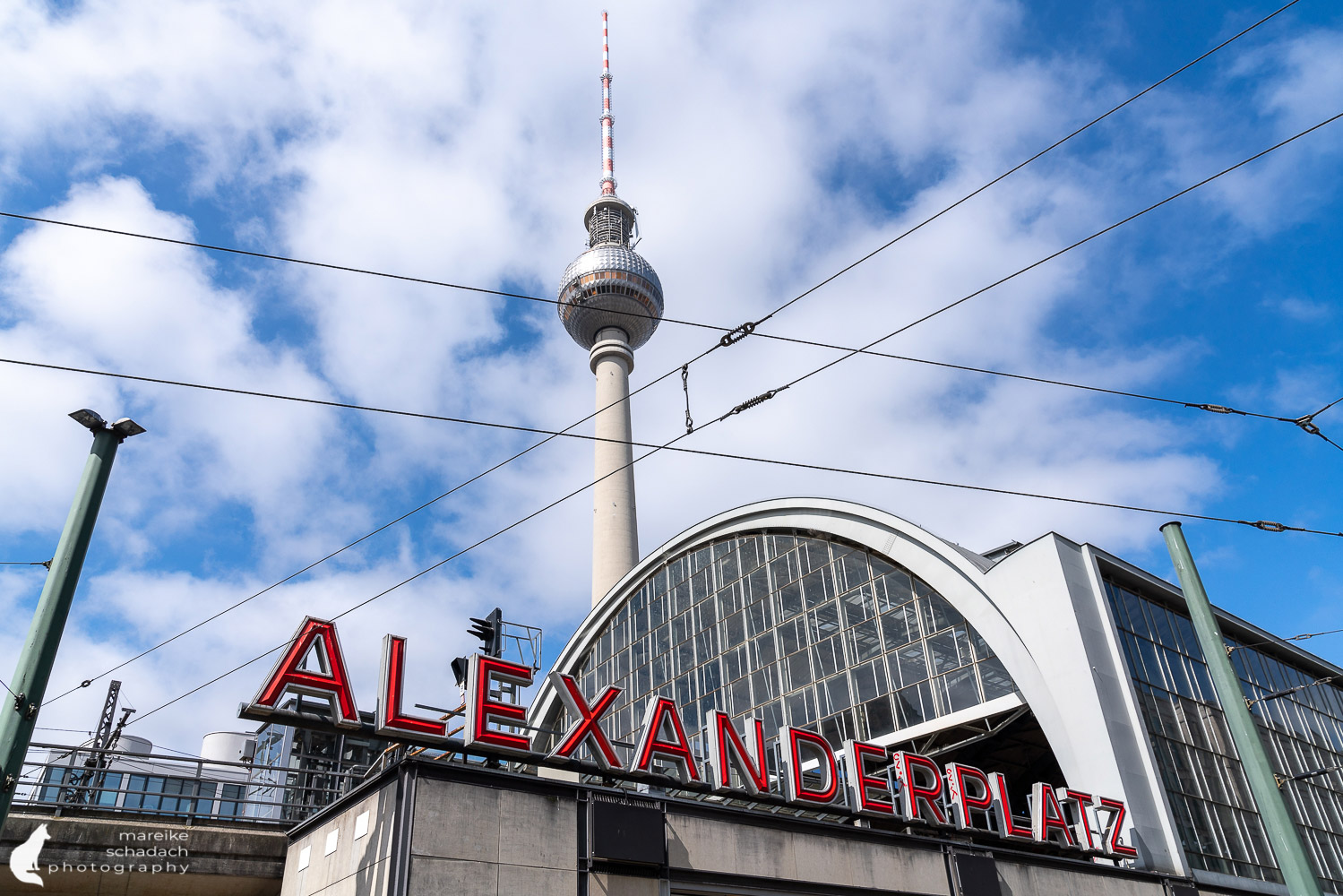
TIP: How about breakfast in the restaurant at 203 meters above sea level*? The restaurant rotates once an hour and you have a fantastic view of the city. Or perhaps you'd prefer the three-course menu in the evening*?
Address: Panoramastrasse 1A
World Time Clock
The world time clock at the Alex is not only a popular meeting place, but also a great photo motif. Either in its entirety or just a section of the hour ring with the planetary system as a crown. There are no limits to your creativity here. For example, the TV tower can be used as a background. And since there are always a lot of people around the clock, street photographers also get their chance here.
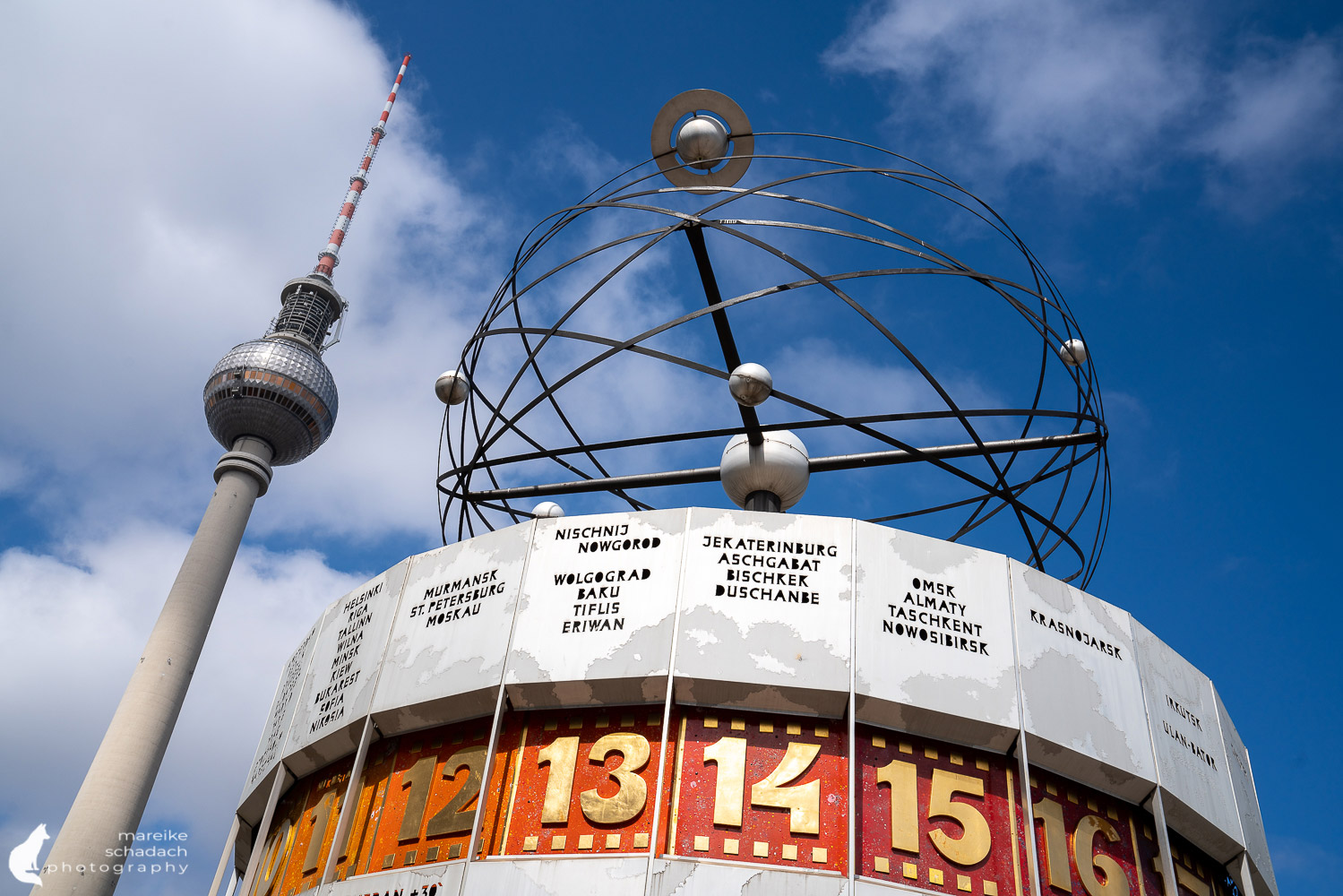
Address: Alexanderplatz 1
"Nuttenbrosche" - Fountain of Friendship between Peoples
There are always so many people sitting on the wall around the fountain that you usually don't see the beautiful enamel work by Walter Womacka in the middle of the fountain. Therefore my tip: go to the Alex on a Sunday morning to take pictures. Then the light is the most beautiful and you can choose your motifs in peace.
By the way, the fountain of friendship built in 1970 is also affectionately called "hooker brooch" which means as much as brooch of prostitutes.
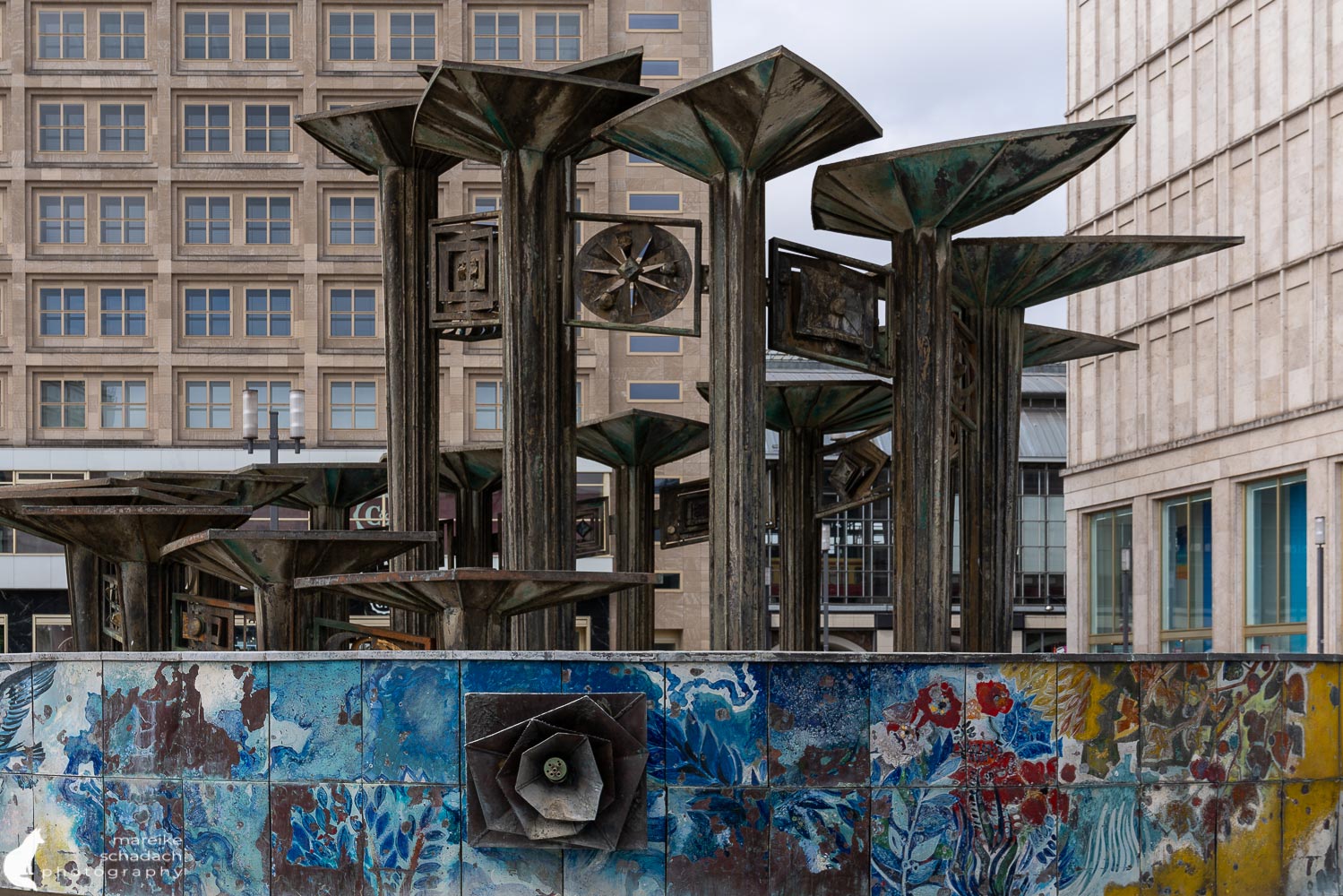
Address: Alexanderplatz 9
Berlin Congress Center
The Berlin Congress Center (BCC), together with the neighboring Haus des Lehrers (House of Teacher), forms a listed ensemble on Alexanderplatz. Both buildings were constructed in the early 1960s during the complete reconstruction of Alexanderplatz, which was destroyed during World War II. The nearby Haus des Reisens (House of Travel) and the Haus der Statistik (House of Statistics) were also part of the redevelopment plan at the time and were built around the same time.
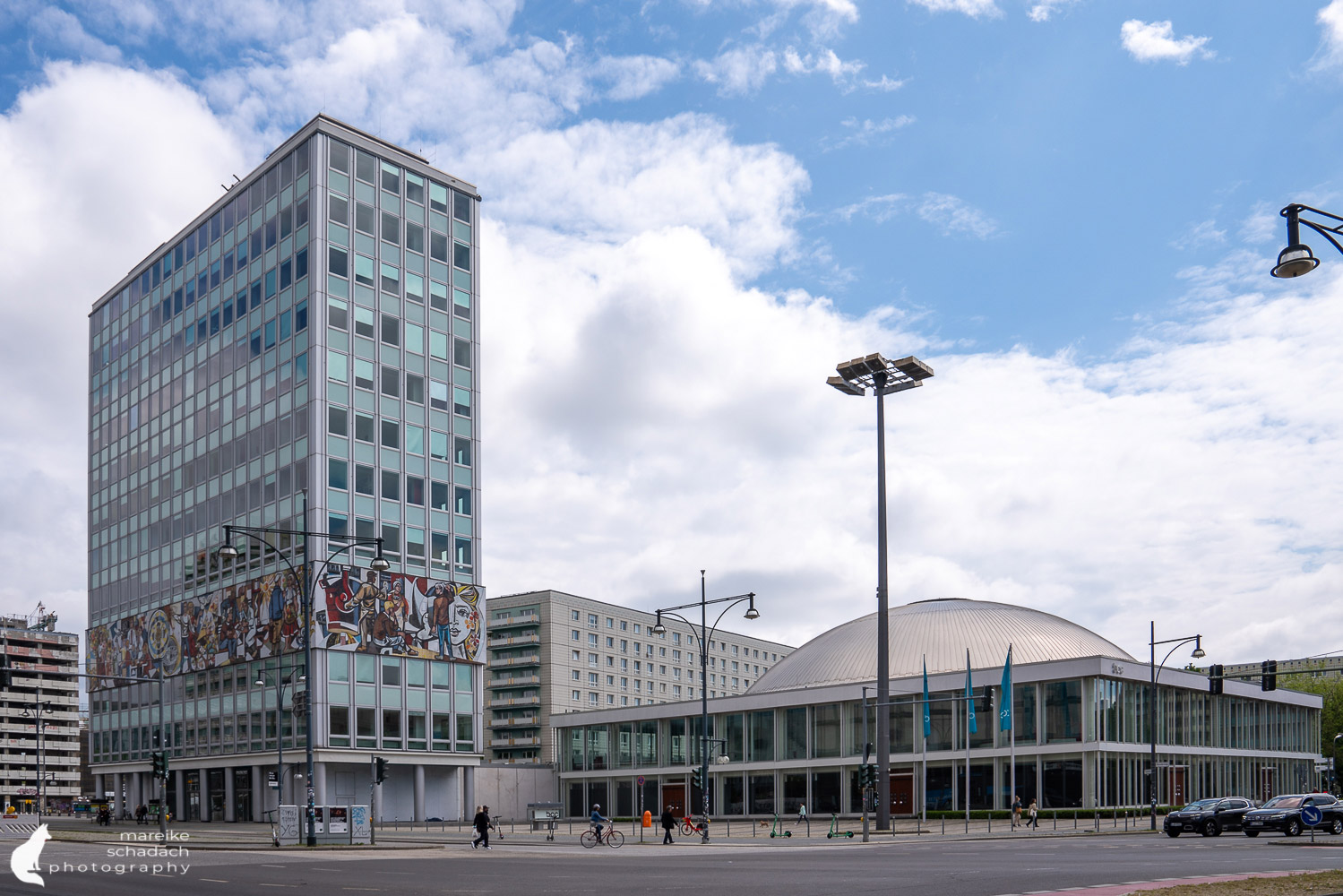
After about three years of construction, the Haus des Lehrers and the Congress Center opened on September 9, 1964. At that time, the People's Chamber of the GDR met in the center, which was equipped with state-of-the-art technology and seating for over 1,000 people. But when the Palace of the Republic opened in 1976, the People's Chamber moved to the even more modern and prestigious building next to Berlin Cathedral.
After reunification, the building ensemble was finally sold and renovated for around 15 million euros. In the process, the entire technology was renewed and 23 event rooms with up to 2,500 seats were created.
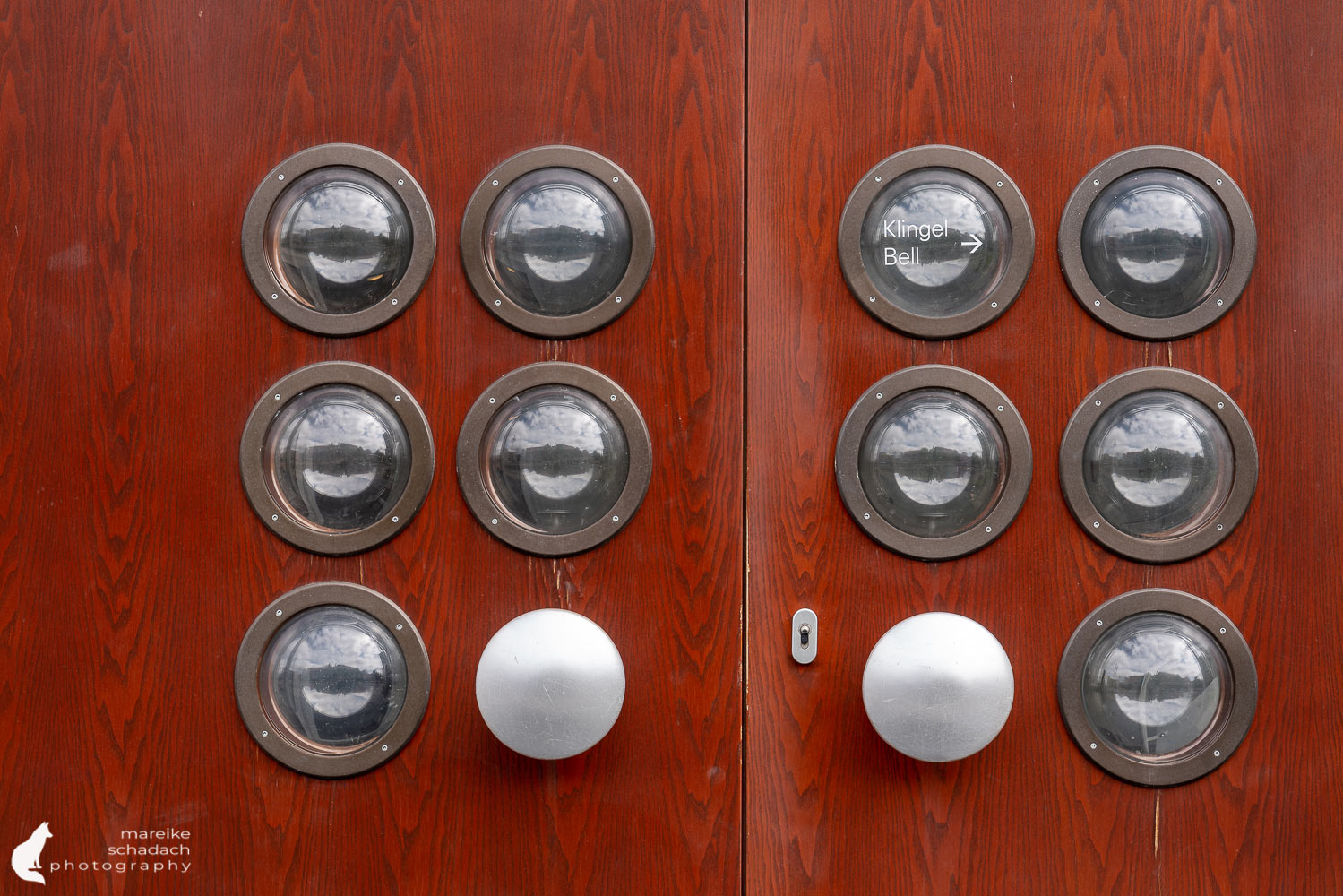
Address: Alexanderstraße 11
House of the Teacher with Walter Womacka Mosaic
Around the House of the Teacher stretches the wide mosaic "Our Life" by the famous artist Walter Womacka. It represents the achievements of science in a Mexican style. The House of the Teacher is a superlative building not only because of the mosaic of millions of little stones: at that time, in 1964, it was the first high-rise building on Alexanderplatz.
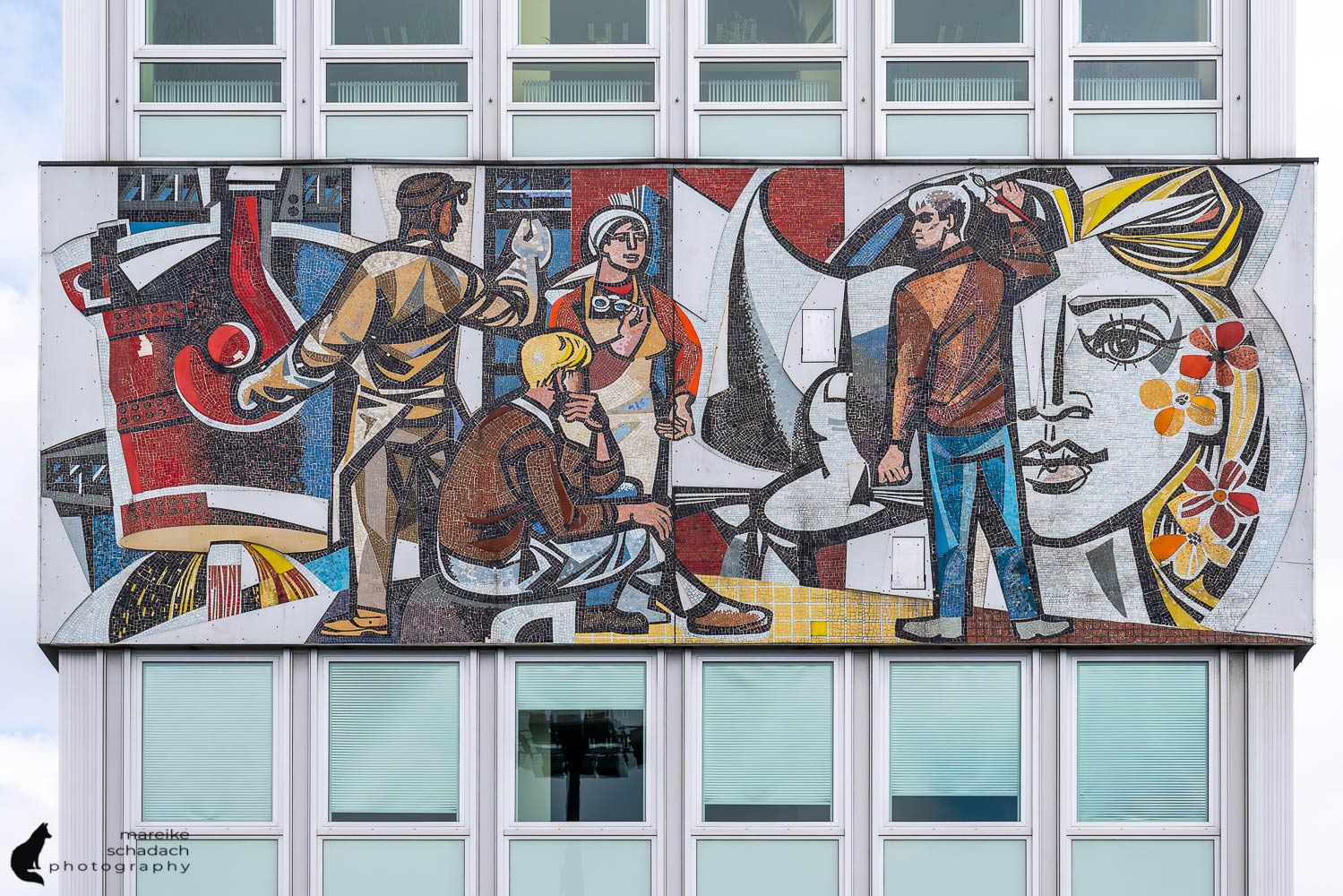
TIP: The mosaic is difficult to photograph. Either you have falling lines or only a small section of the artwork in the picture. It is best to try to photograph it from further away with a telephoto lens.
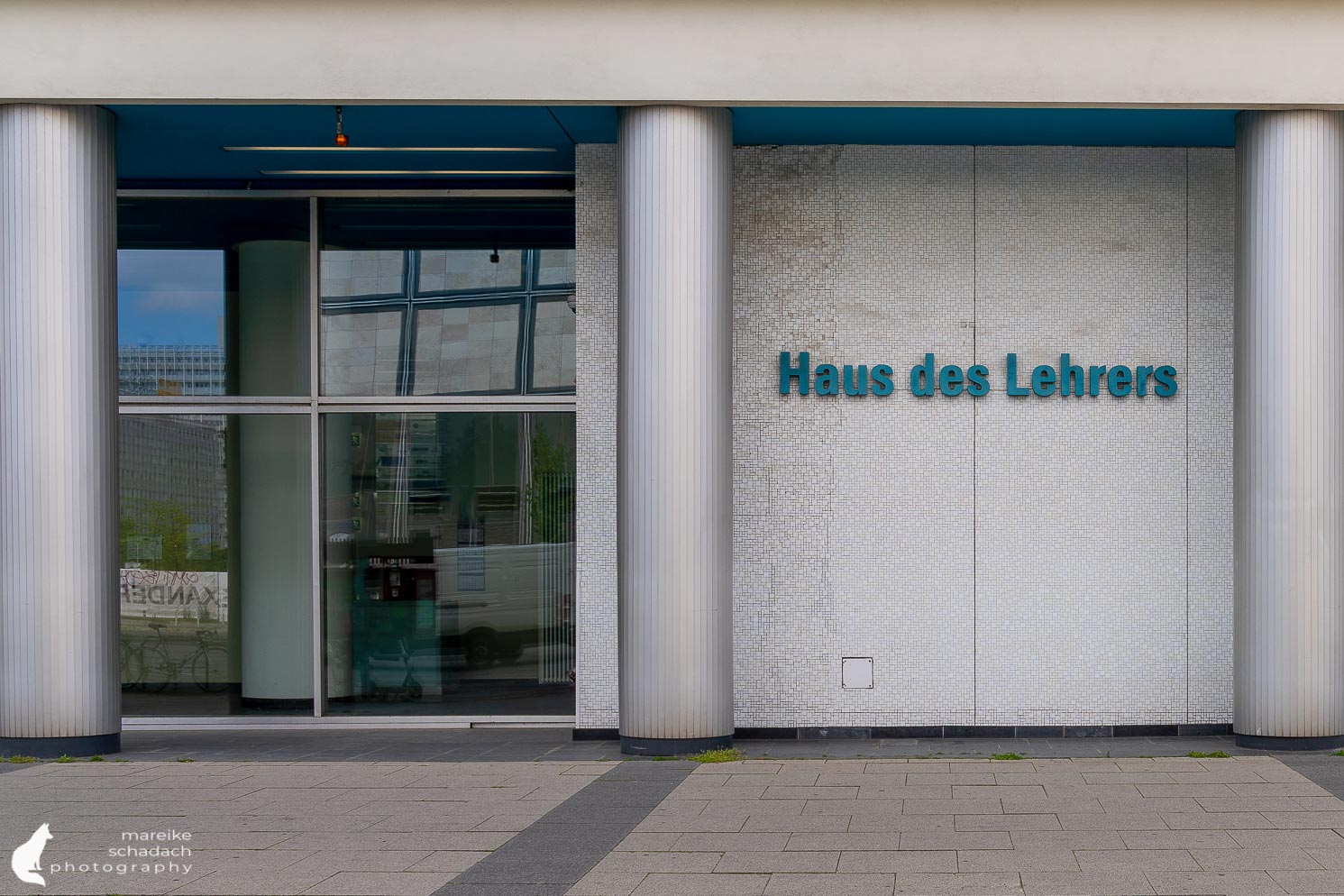
Address: Alexanderstraße 9
House of Travel
The Haus des Reisens was opened in 1971. Today, the building with its extraordinary architectural details is listed as an example of international architecture of the 1970s. These beautiful details include the wave-shaped canopy and the copper relief "Man Overcomes Time and Space" by the artist Walter Womacka.

The 18-story House of Travel was home to the headquarters of the Travel Agency of the German Democratic Republic and offices of Interflug until German reunification. It also housed counters for air and train traffic, the central foreigners' service of the travel agency with the foreigners' registration service, and an exchange office of the Industrie- und Handelsbank.
TIP: On the 12th floor as well as on the roof terrace on the 15th floor, the Week End Club invites you to chill out and party.
Address: Alexanderstraße 7
House of Statistics
The House of Statistics was opened in 1970 as the headquarters of the GDR's State Central Administration for Statistics. It was built according to socialist ideals as part of the redevelopment of the war-damaged Alexanderplatz.
After German reunification, the Federal Statistical Office and the Federal Commissioner for Stasi Documents used the buildings. Since 2008, the buildings have stood empty. The Federal Republic of Germany, as the owner, already intended to demolish and sell the property. But in 2017, the Berlin Senate bought the ensemble of buildings at a price of 50 million euros.
Extensive refurbishment and conversion measures for mixed use for administration, culture, education, social services and housing are planned.
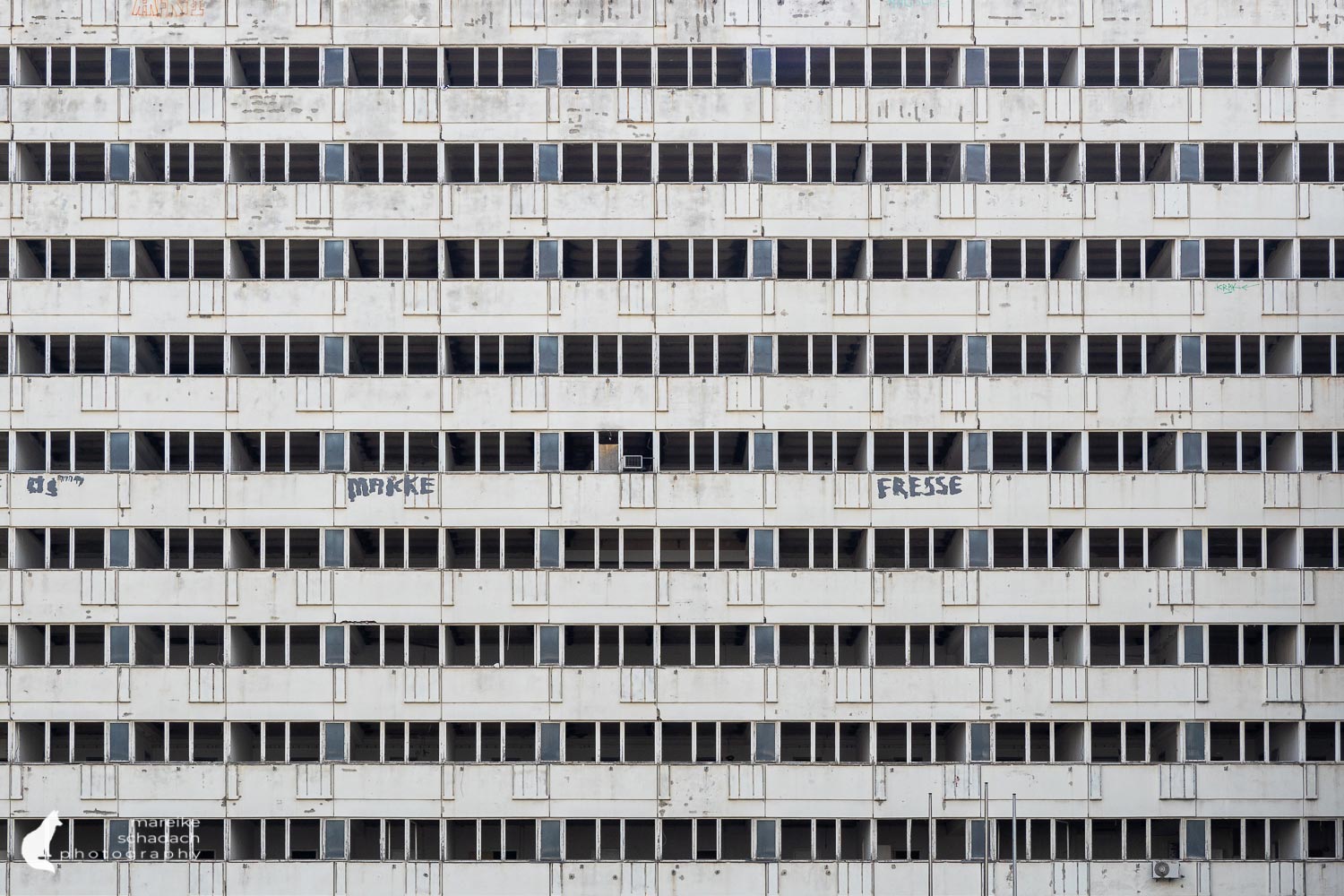
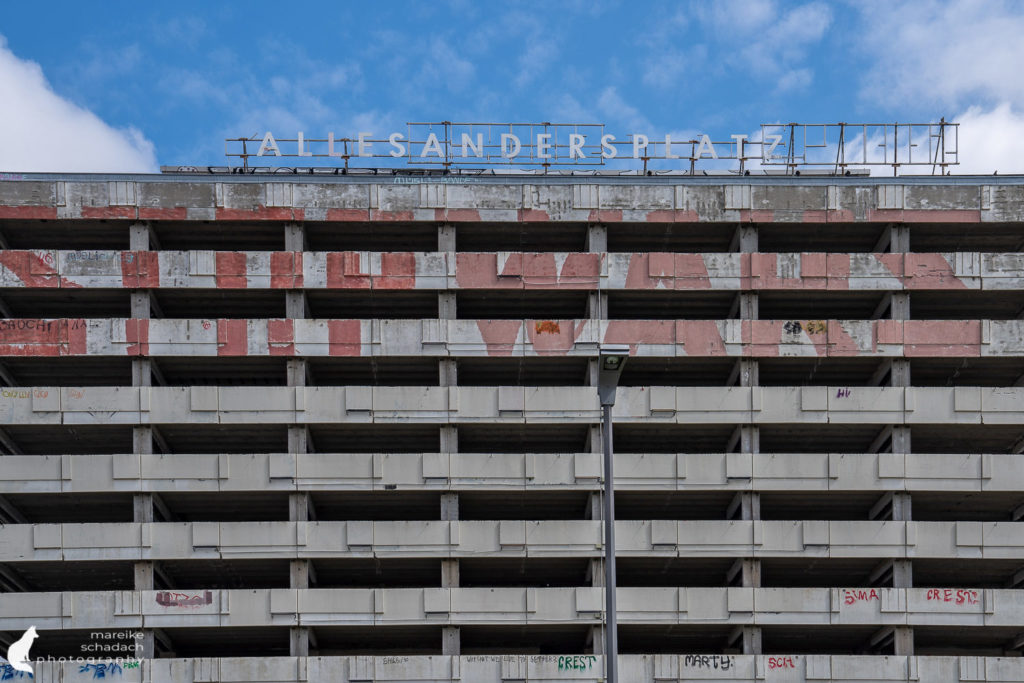
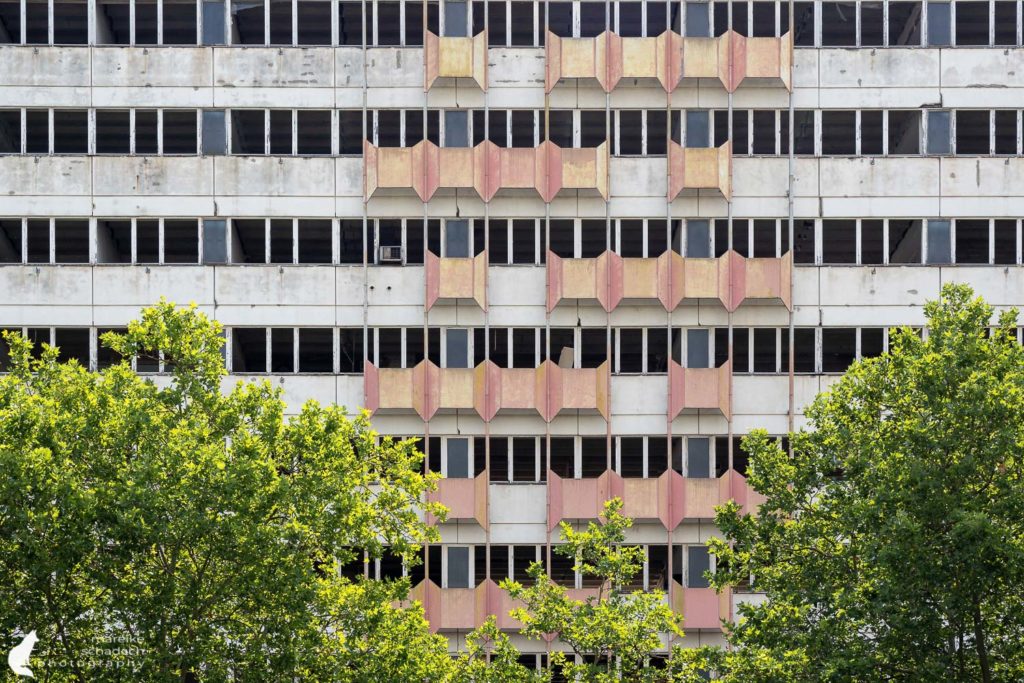
Address: Otto-Braun-Strasse 70-72
Café Moscow
Café Moskau is located directly opposite the Cinema International. At the time of the GDR, it was a nationality restaurant serving food from different peoples of the Soviet Union. It opened in 1964 and had more than 600 seats inside.
An eye-catcher to this day is the full-size model of the Sputnik satellite on the roof above the entrance. Below it, the large mosaic "From the Life of the Peoples of the Soviet Union" by the painter Bert Heller decorates the entrance area.

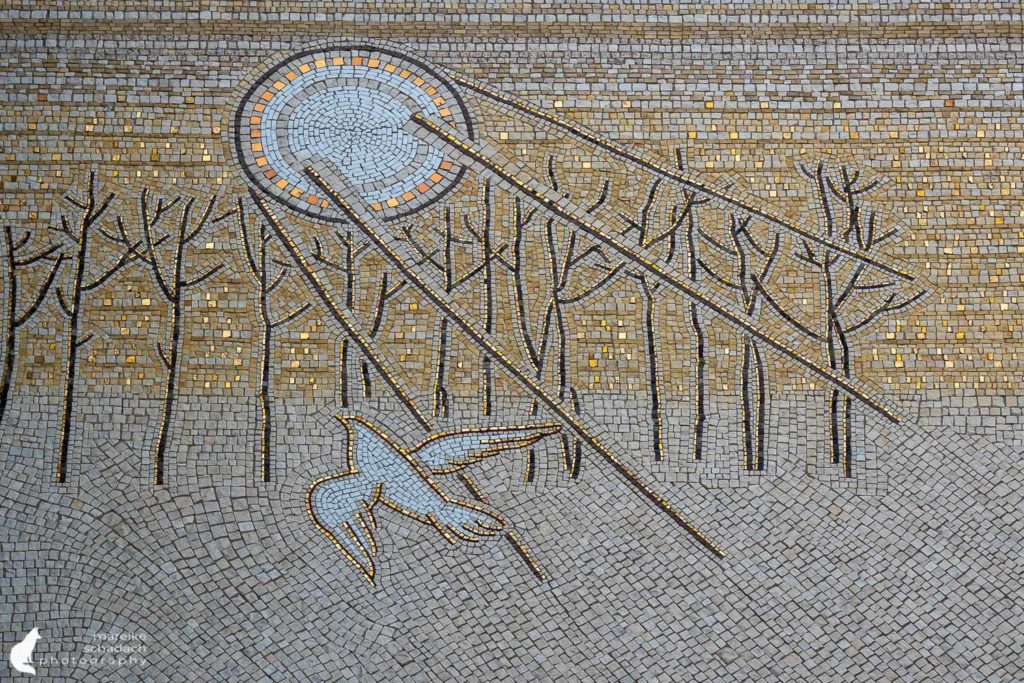
After the fall of the Berlin Wall, the Treuhand took over the building, which was listed as a historical monument in 1990. After it stood empty for about ten years, various events were again held in the café from 2000. In 2007, the popular meeting place was then renovated in accordance with the preservation order and a new room concept, new building technology and a new glass facade were implemented.
The mosaic painting takes up the entire wall height in the entrance area. The detailed work of natural stone contains golden accents in some places. In the upper left corner of the mosaic you can also spot the Sputnik satellite.
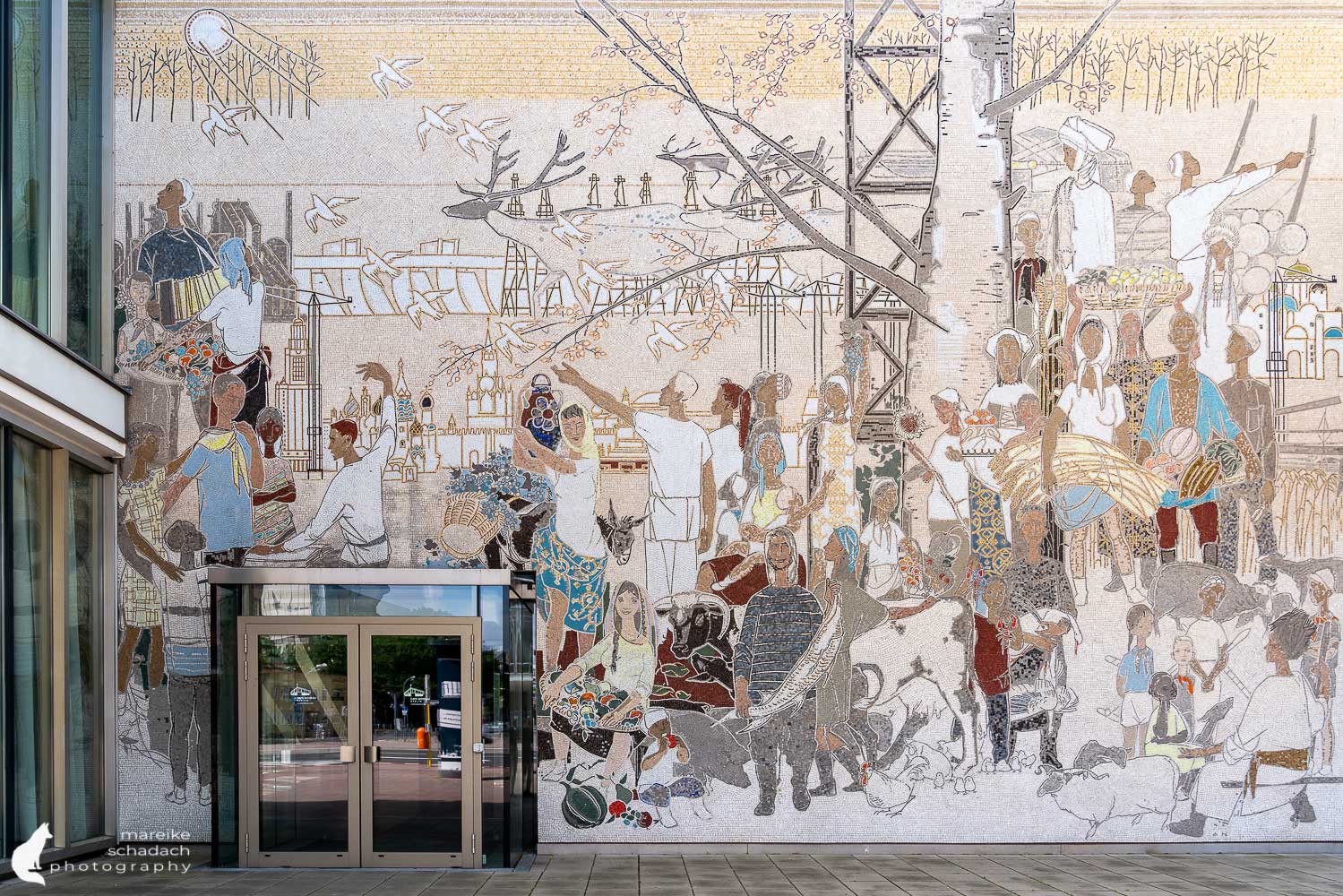
Address: Karl-Marx-Allee 34
Cinema International
The large-capacity Cinema International opened in 1963 and hosted film premieres until 1990. The three-story reinforced concrete skeleton building appears light and airy. This impression is reinforced because the cinema hall cantilevers nine meters above the first floor without a single support and appears to float above it. With its large glass surface, the entrance area appears open and inviting.
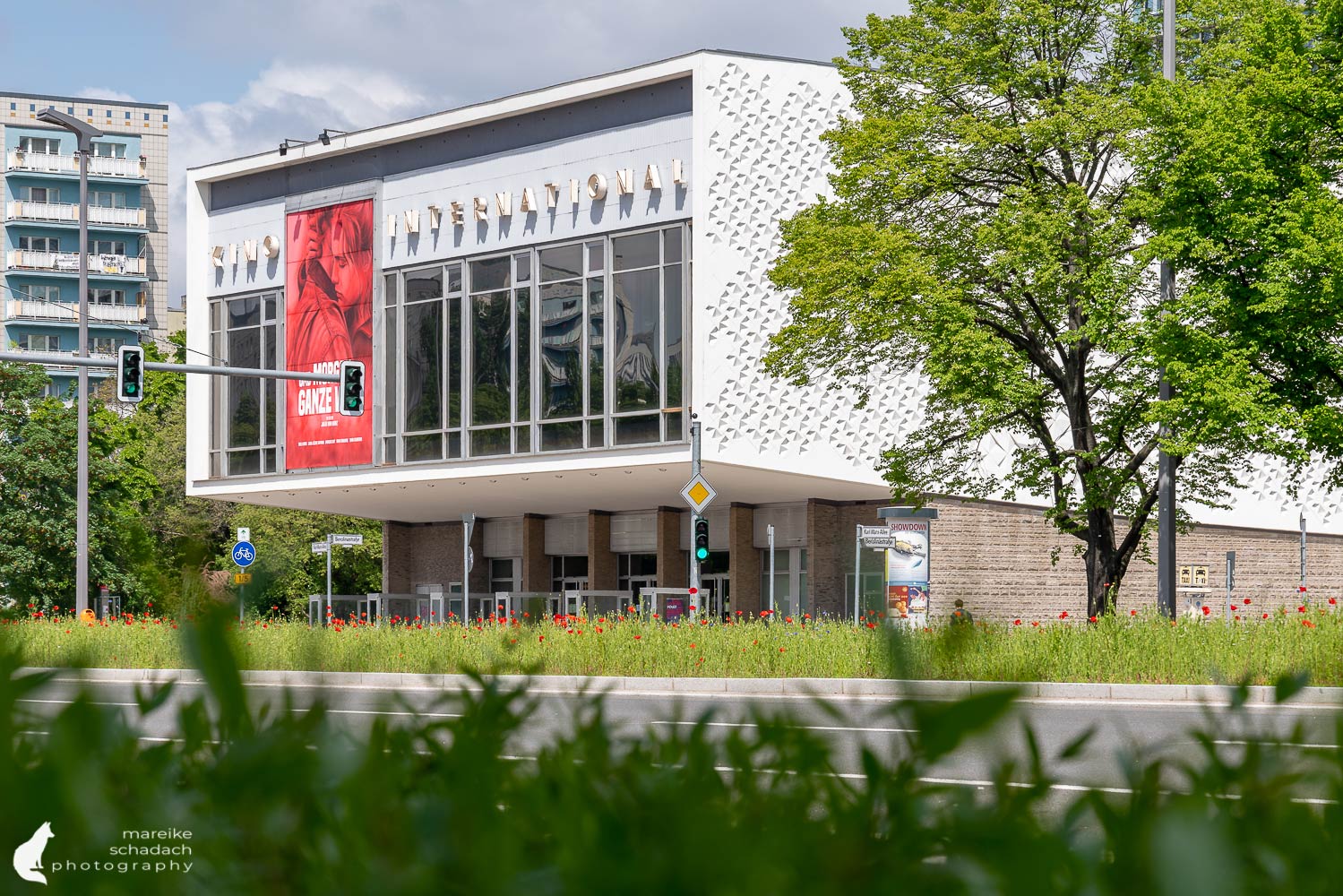
In addition to the cinema hall, there were also other rooms, including a representation room. This is where the party leadership met after the premieres, which is why the room is called the "Honecker Lounge" today. There was also a library and even a small nuclear bunker in the basement.
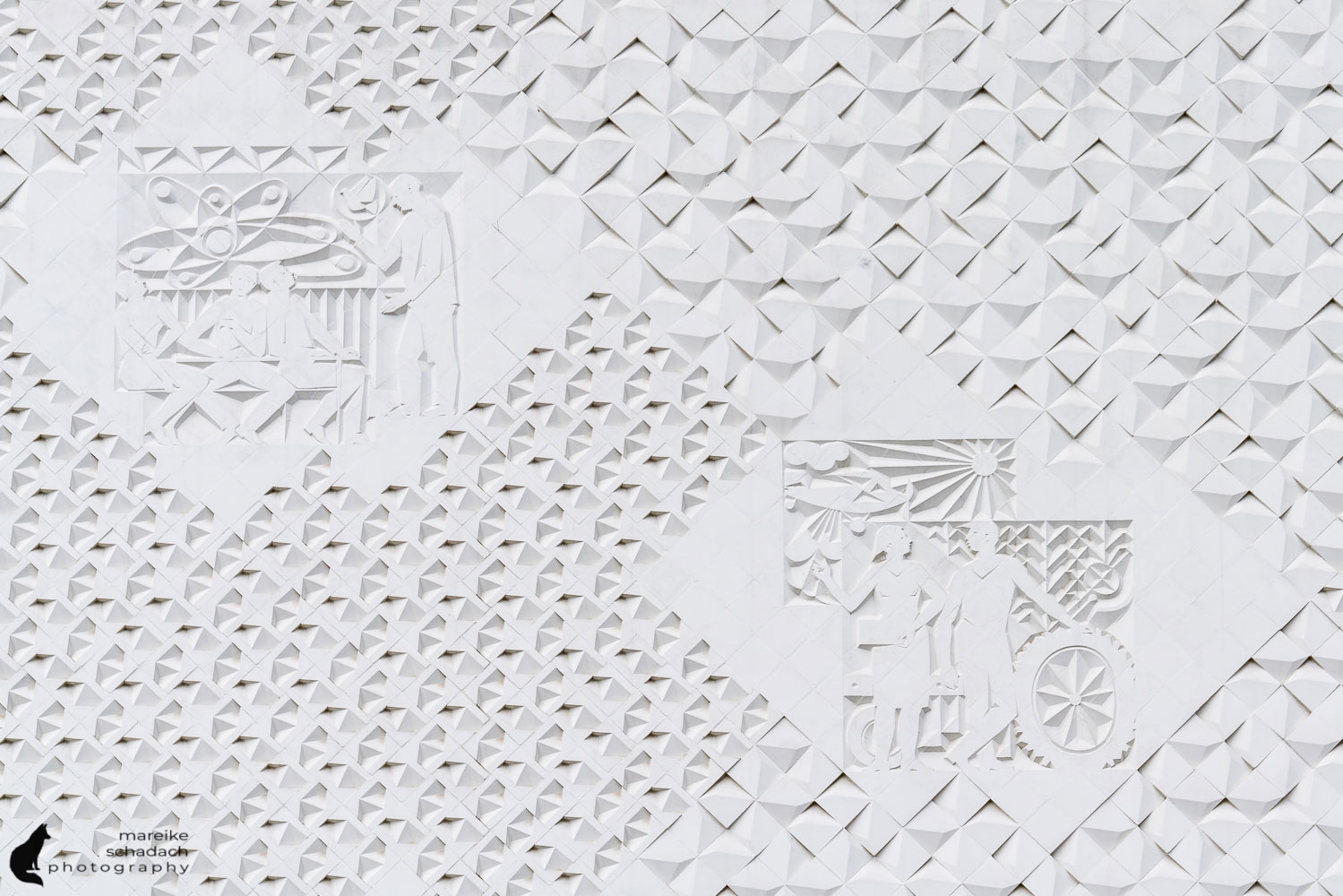
Address: Karl-Marx-Allee 33
Former Mocha Milk Ice Cream Bar
The Mokka-Milch ice cream bar was planned as one of eleven analog pavilions. However, only five of these were actually realized in the early 1960s. In addition to the Mokka-Milch-Eisbar, these were the Madeleine fashion salon with the Interflor flower shop, the Babette beauty salon, Kunst im Heim and the Centrum shoe store. The flat hall buildings are all clad with yellow ceramic tiles on the outer facades and have an open gallery floor inside.
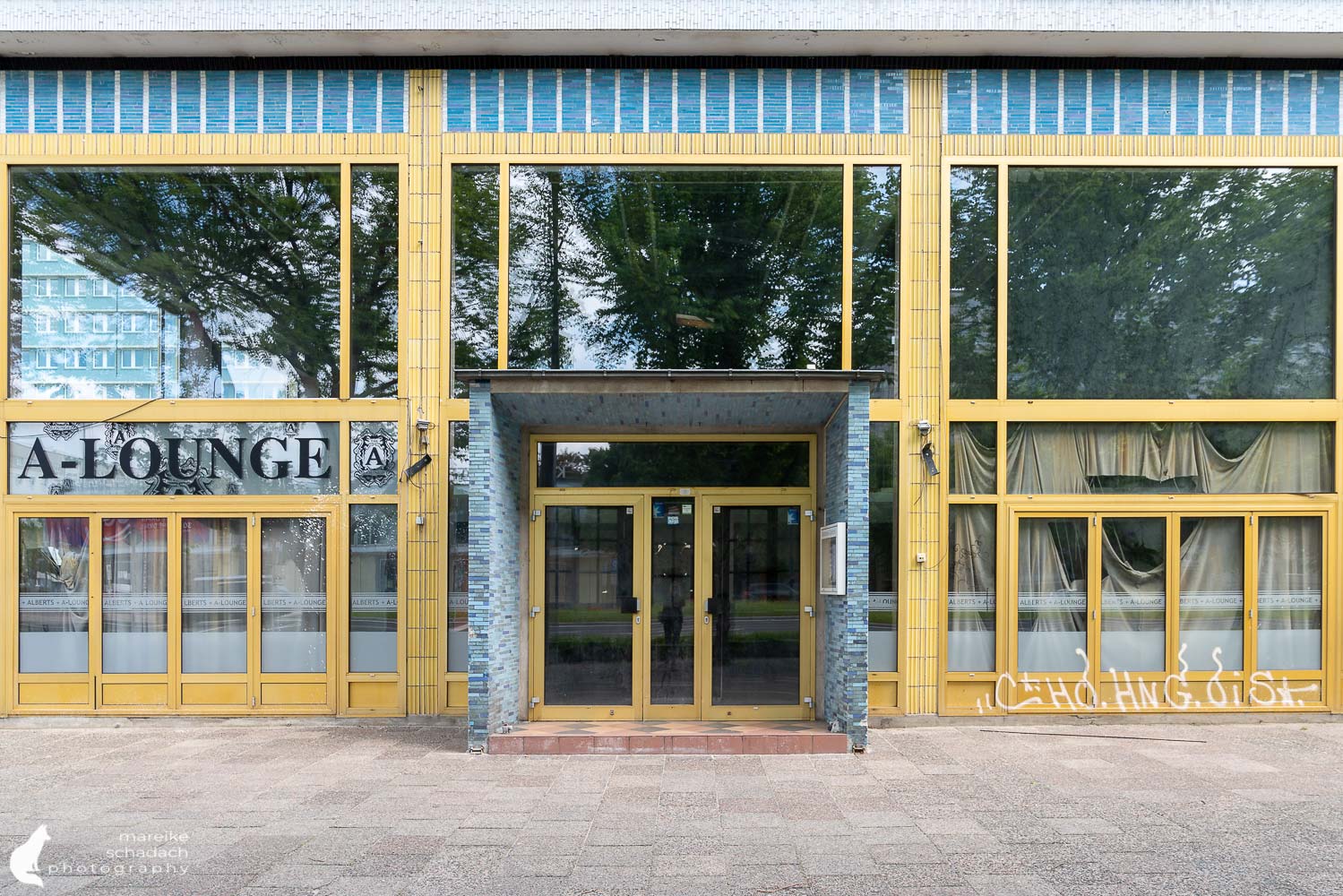
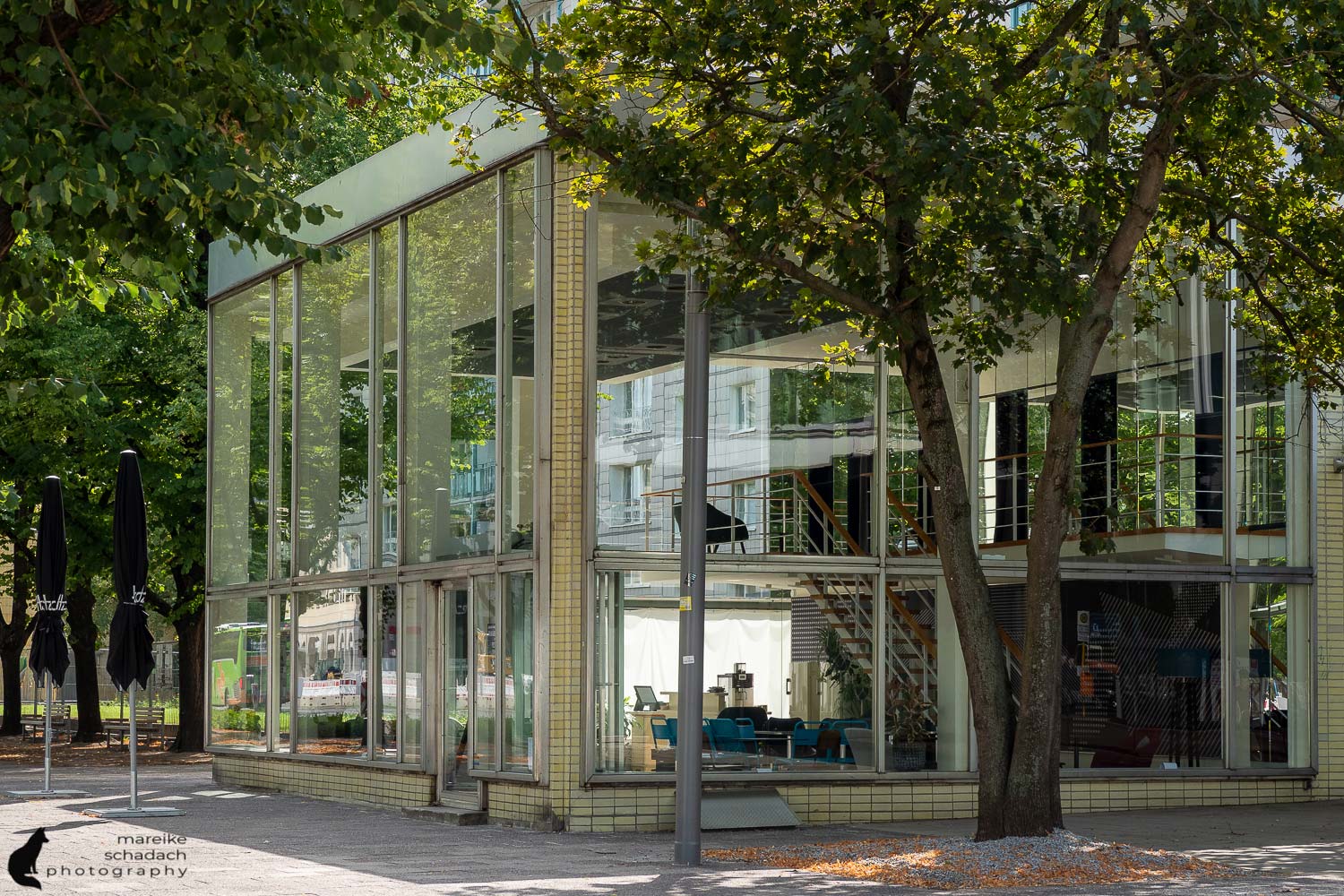
Together with the Kino International and Café Moskau, the five pavilions form an ensemble that blends into the surrounding residential complex. The ensemble originally included the Hotel Berolina behind the cinema. But this was demolished in 1996. A similar-looking high-rise building was built on the same site, which eventually housed the Mitte City Hall. All the buildings together are an extremely worth seeing example of GDR architecture in Berlin.
The Mocha Milk Ice Cream Bar soon achieved cult status and was especially popular with young people. After the fall of the Berlin Wall, however, the bar had to close. It was not until 1993 that the building reopened with the Alberts restaurant and the A-Lounge nightclub. At Alberts, you could even try classic eastern dishes, such as ragout fin of veal, cold dog, sausage goulash or steak au four. But in 2019, Alberts, and with it the last restaurant in the pavilions, closed its doors.
In May 2018, plans were presented according to which the five built pavilions will be completed in the future.
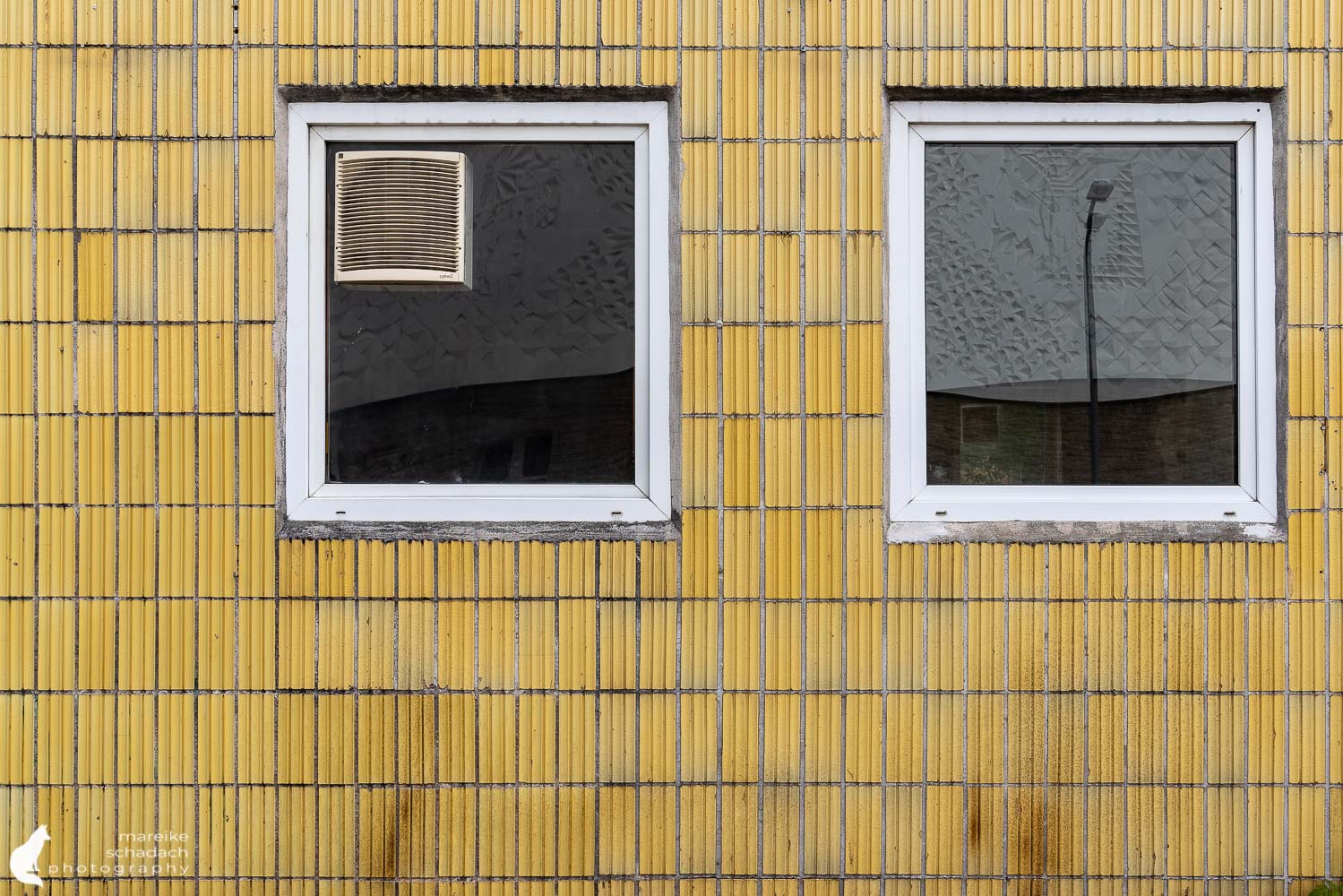
Address A-Lounge: Karl-Marx-Allee 35
Long tested and much loved: my three companions on photo tours: the lightweight carbon tripod CT-5C I from Rollei*, the cleaning kit from Rollei*and my indestructible camera backpack, the Flipside from Lowepro*.
"Floating Ring" at Strausberger Platz
In the middle of Strausberger Platz, which was redesigned at the end of the 1960s, stands the "Schwebender Ring" fountain designed by Fritz Kühn. Built in 1966, the fountain takes its name from the monumental decorative ring that is held in suspension by several posts in the center of the fountain. The ring consists of 16 rectangular relief panels showing combinations of diamond and pyramid shapes. Each relief also shows a different combination. The water fountain in the center of the ring reaches a height of up to 18 meters. In addition, the ring is surrounded by smaller water fountains. Due to the spray of water, the pillars supporting the ring are barely visible, making it appear as if the ring is floating.
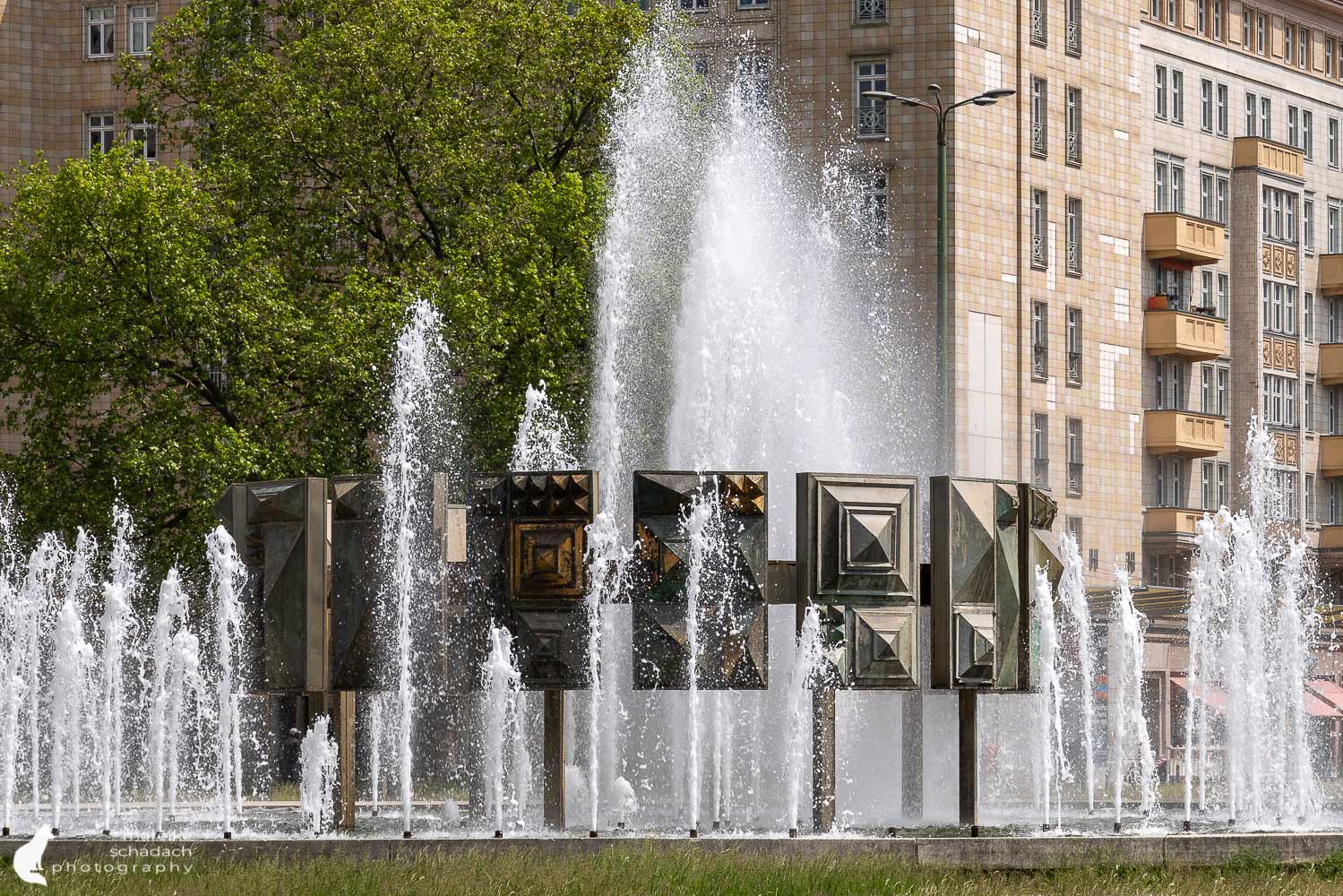
Address: Strausberger Platz center island
Karl Marx Bust
The southeastern edge of Strausberger Platz has been adorned since 1983 by a bronze Karl Marx bust about one meter tall.
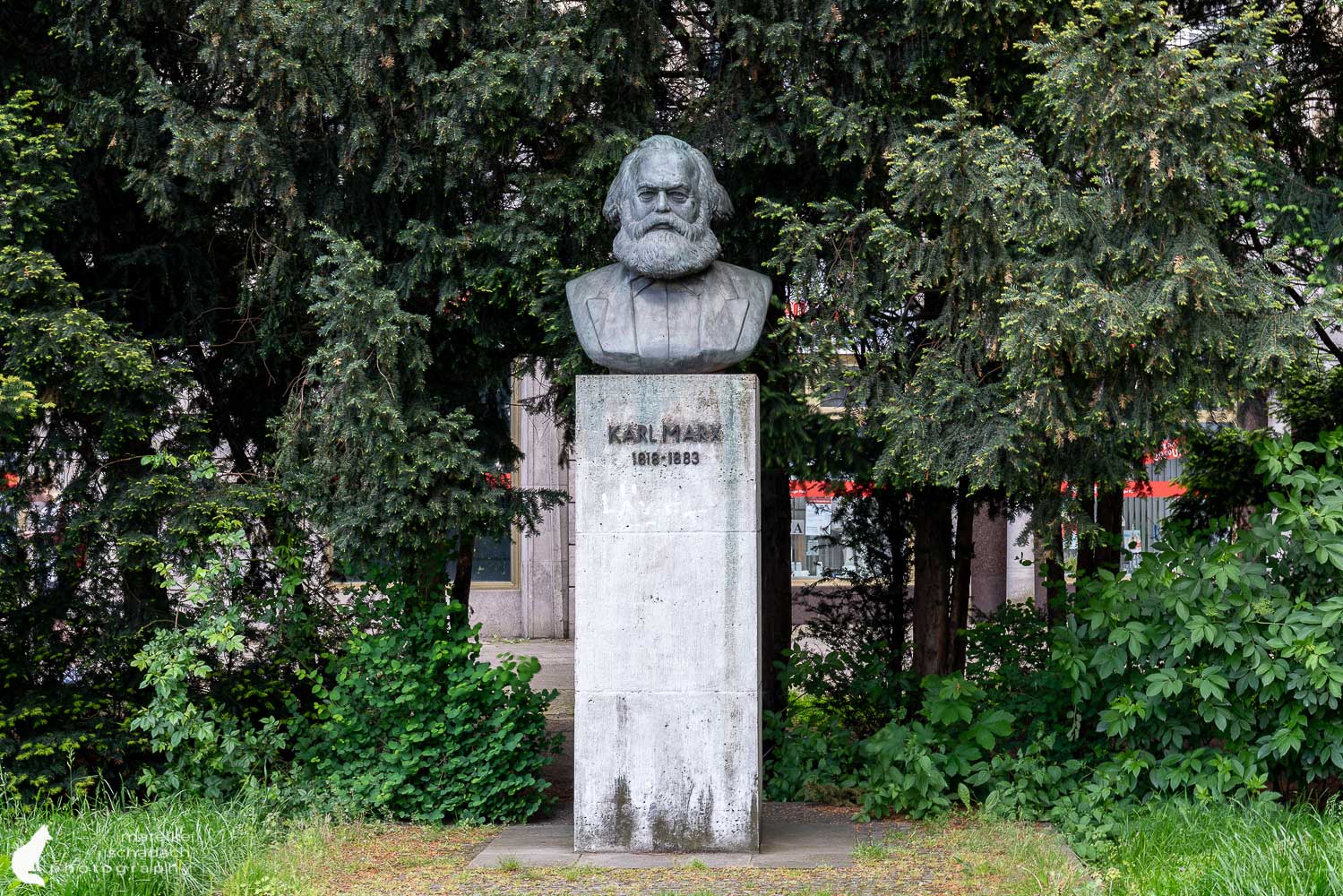
Address: Strausberger Platz
Workers' Palaces and GDR Architecture of Karl-Marx-Allee
As part of the National Reconstruction Program, a boulevard was to be built as a showpiece of the capital. The plan was to create a prestigious avenue with magnificent "workers' palaces". The buildings were to be a symbol of the GDR's strength and engineering skills. From my point of view this was completely successful, the buildings are great examples of GDR architecture in Berlin.
The boulevard is wider than average over a length of two kilometers. This provided enough space for parades and marches. The street is lined with five large-scale workers' palaces with up to 13 floors.
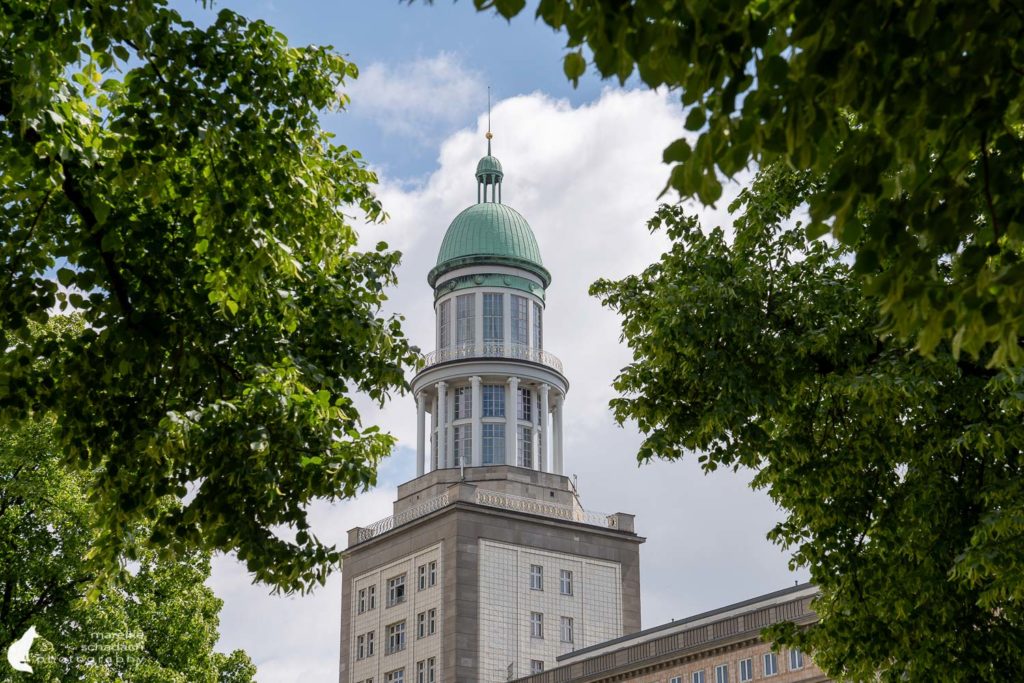
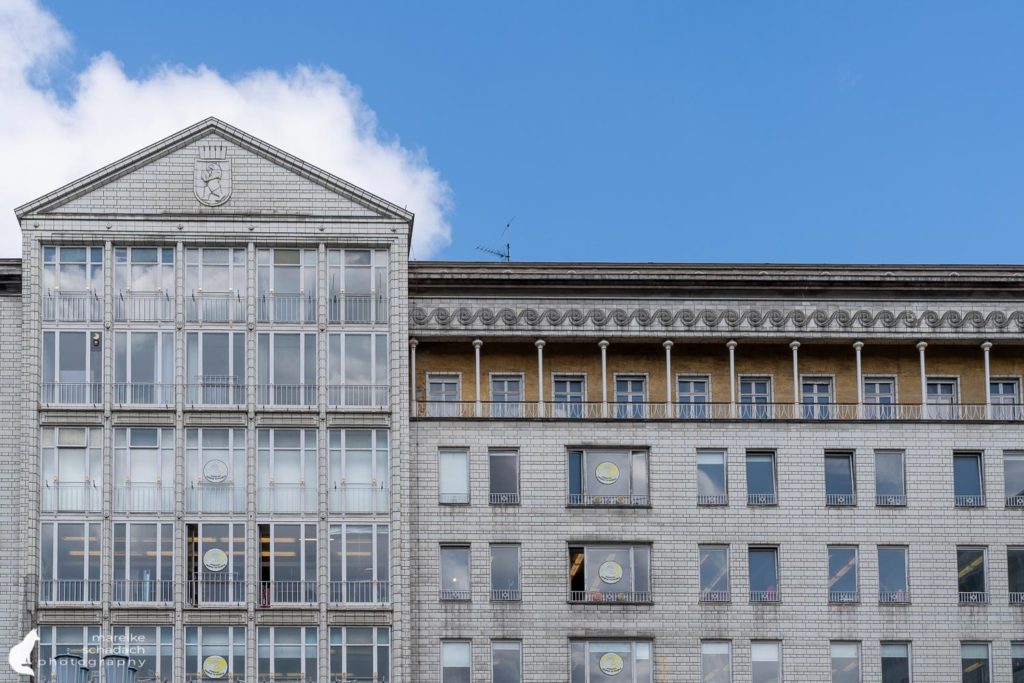

The architectural style is based on Socialist Classicism as well as Berlin Classicism. Thus, antique forms can be found in many places, such as Doric or Ionic columns or ornamental gables with friezes. The tower buildings at Strausberger Platz and Frankfurter Tor are the architectural highlights of Karl-Marx-Allee and are reminiscent of a city gate.
The western end of the square is formed by the two 14-story high-rise buildings "Haus des Kindes" (House of Children) and "Haus Berlin". At the time, Haus des Kindes housed apartments, a puppet theater, a kindergarten, a children's department store and a children's café. Haus Berlin housed restaurants, cafés and also a bar on the lower and upper floors.
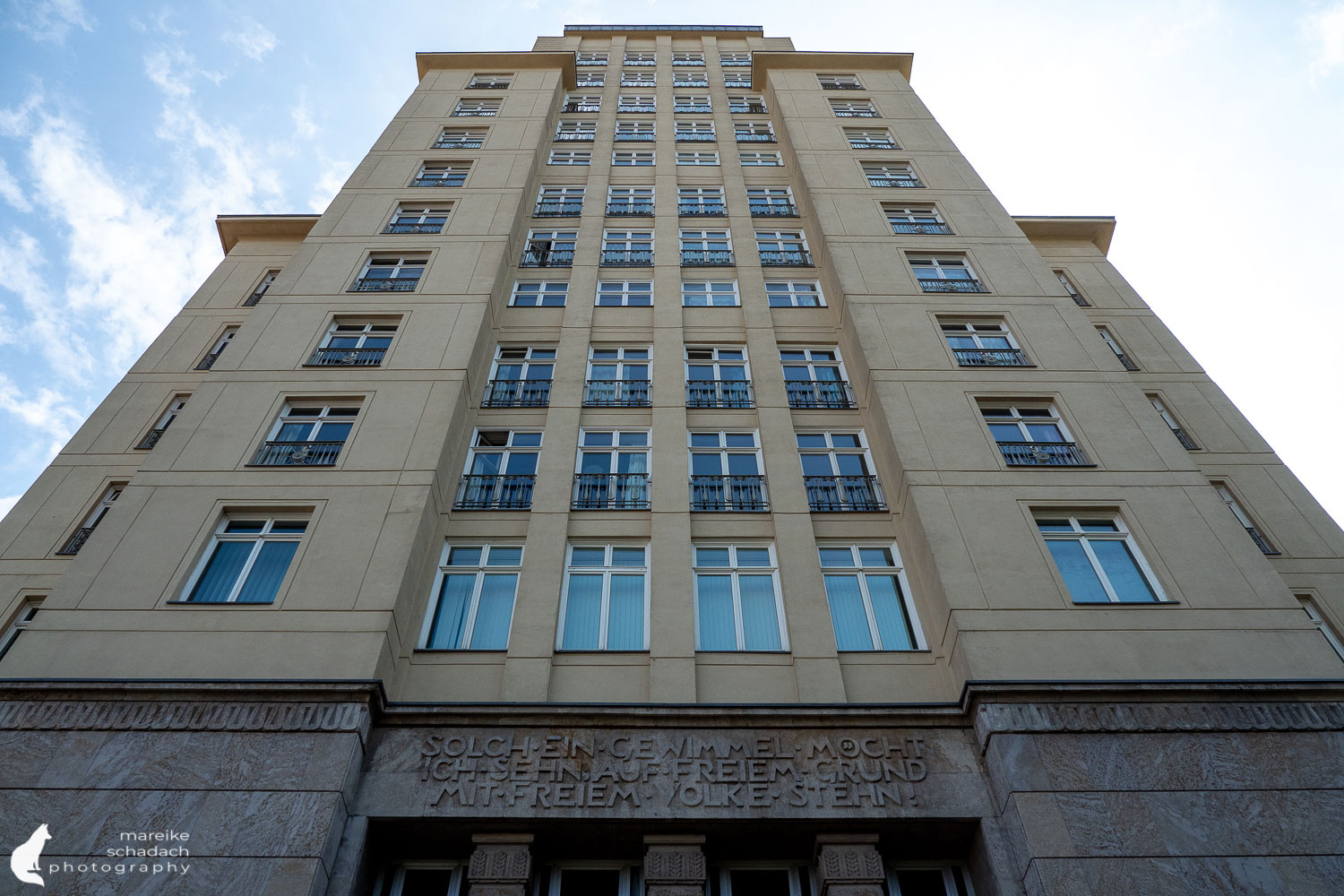
Name salad
The new boulevard was renamed Stalinallee to celebrate Stalin's 70th birthday on December 21, 1949. After Stalin's death, it was given the name Karl-Marx-Alleein the course of de-Stalinization on November 13, 1961. The section of Stalinallee to the east of the Frankfurter Tor was renamed Frankfurter Allee.
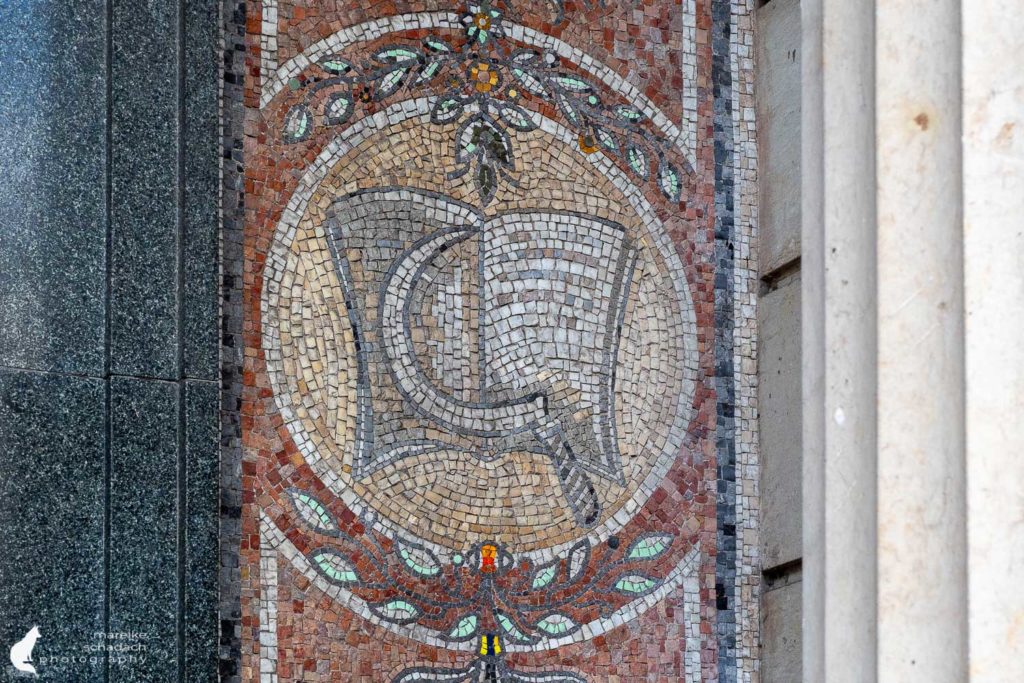
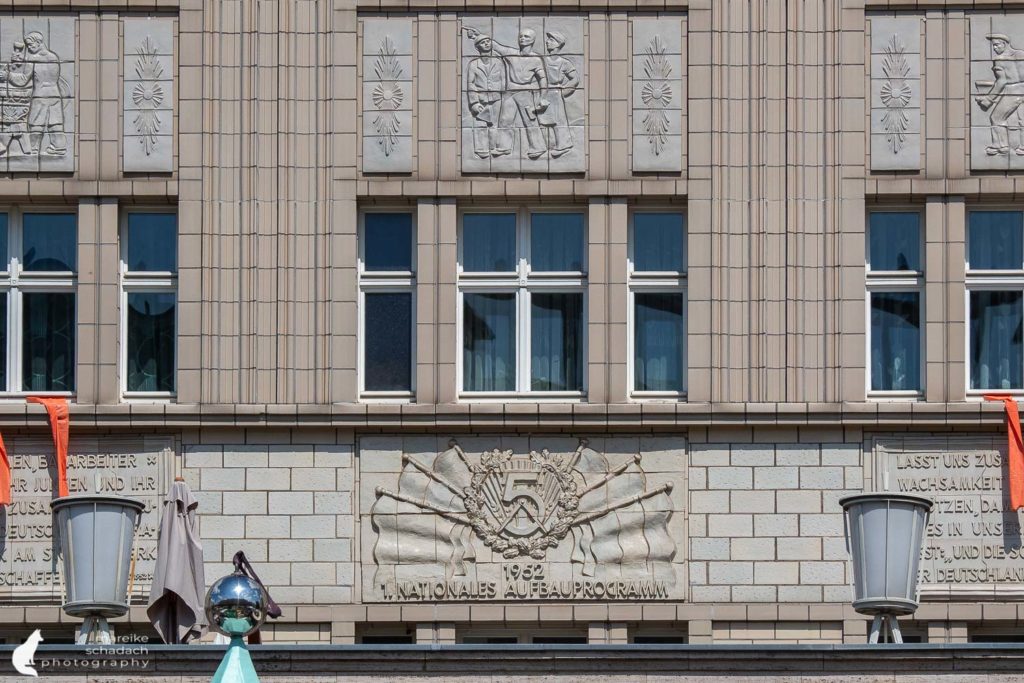
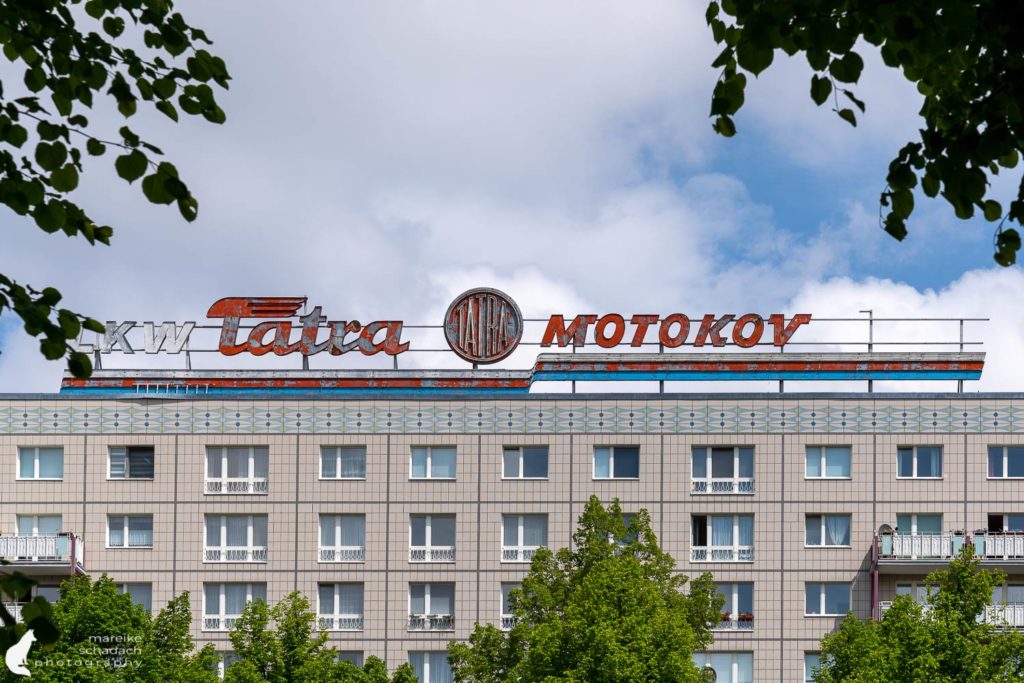
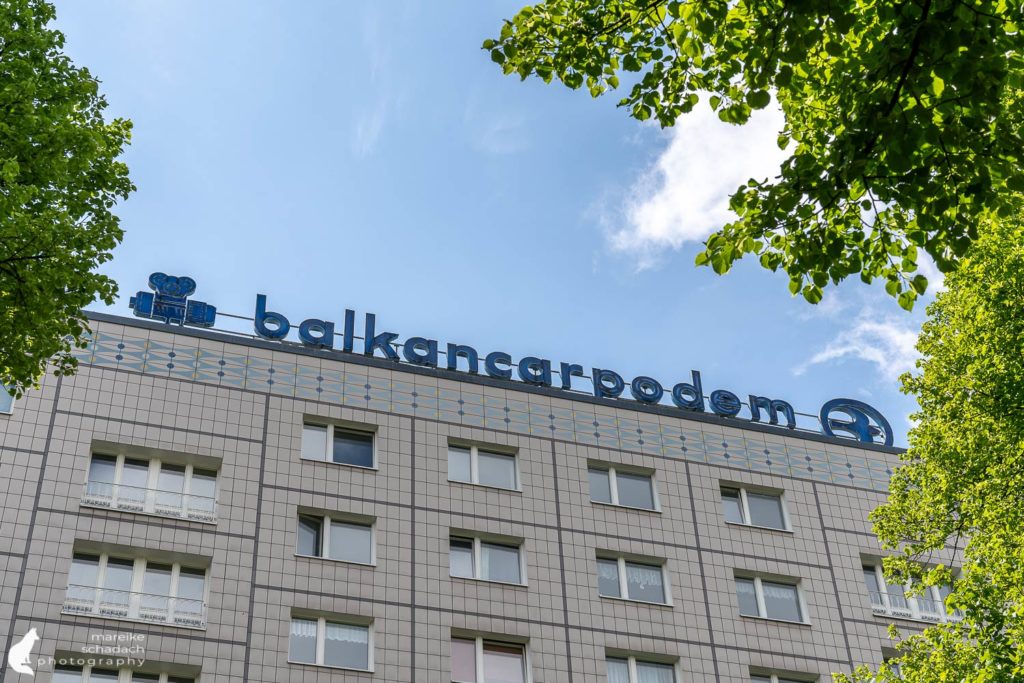
Address: Karl-Marx-Allee
Cinema Kosmos
The large-capacity Kosmos cinema was opened on October 5, 1962. It was the largest cinema in the GDR with 1001 seats and was used as a premiere cinema. After the German reunification, the cinema was finally taken over by UFA and converted into a multiplex cinema with 3400 seats in 1996. In 2005, however, cinema operations were discontinued. Since March 2006, Kosmos has been used for conferences, evening events, special cinema screenings and as a theater.
While the surrounding buildings of the Karl-Marx-Alle are built in the "Zuckerbäcker" style, the Kosmos cinema with its smooth facade and curved surfaces resembles more the congress hall built at the same time in West Berlin. The façade of the foyer with its colorful stones made of glazed ceramics is particularly striking.

Address: Karl-Marx-Allee 131A
Café Sybille
Café Sibylle opened in 1953 under the name Milchtrinkhalle and was renamed Milchbar a short time later. In the 1960s, the Milchbar was renamed again to Café Sybille. The name was taken from the women's magazine Sybille, which was popular in the GDR at the time. The café developed into a showpiece and popular meeting place. But when the fall of the Berlin Wall came, it was closed, like so many other establishments.
In the early 2000s, Café Sybille reopened under the same name. It is still much more than just a café, however. For it also houses an exhibition about the history of the former Stalin and later Karl Marx Allee.
Also on display are numerous everyday objects from the GDR of the 1950s and 1960s, as well as an ear and a piece of beard from the Stalin monument that stood on Stalinallee in the 1960s.
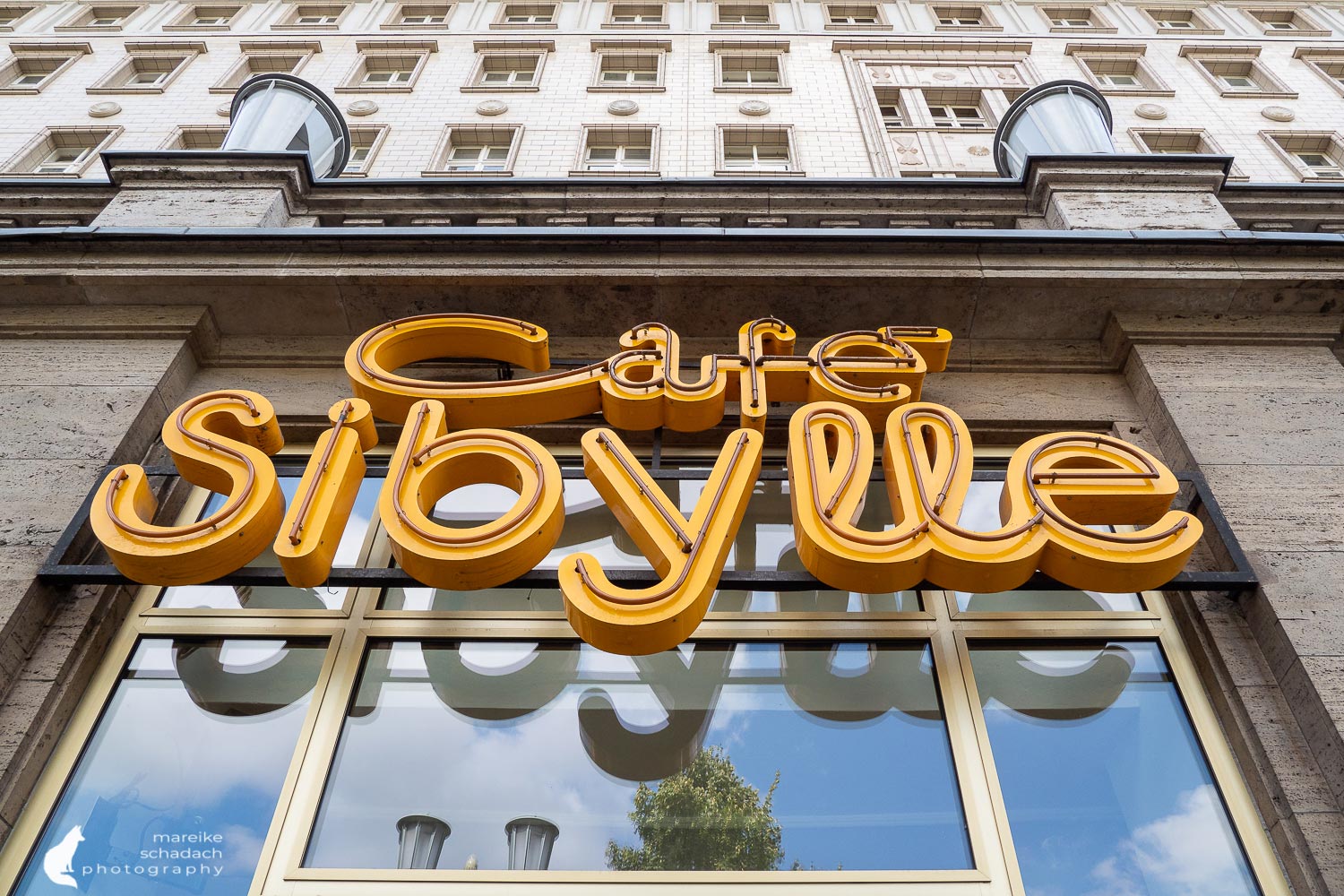
Address: Karl-Marx-Allee 72
Paulick Candelabra
Architect Richard Paulick designed the two- and four-armed Paulick candelabras especially for Stalinallee in the early 1950s. A total of 215 Paulick candelabras adorn today's Karl-Marx-Allee. Due to severe damage caused by corrosion of the steel reinforcements and concrete spalling, the candelabras were replaced by replicas of the same shape in 2008 and 2009.

Book Recommendations for GDR Architecture
Want to know even more about GDR architecture and discover new photo locations in Berlin and the former GDR? Then I have a lot of inspiration for trips and photo tours for you. You can order the books easily at Amazon by clicking on the pictures. If you buy a book or another article via an affiliate link, I get a small commission and you help me to keep filling Fernweh-Motive with interesting articles. The product will not be more expensive for you.
Did you like the photo tour DDR architecture in Berlin? Do you have any questions or suggestions about my article? If yes, then write me a comment!
Do you want to know when there are new articles on my blog? Then follow me on Facebook, Pinterest or Instagram. I would also be very happy if you share my article with your friends.
More Architecture Articles to read
You want to discover more architectural gems? How about a Photo Tour in "Elektropolis" - Industrial Architecture in Berlin Schöneweide or a Journey through Time to the socialist planned city of Eisenhüttenstadt??
